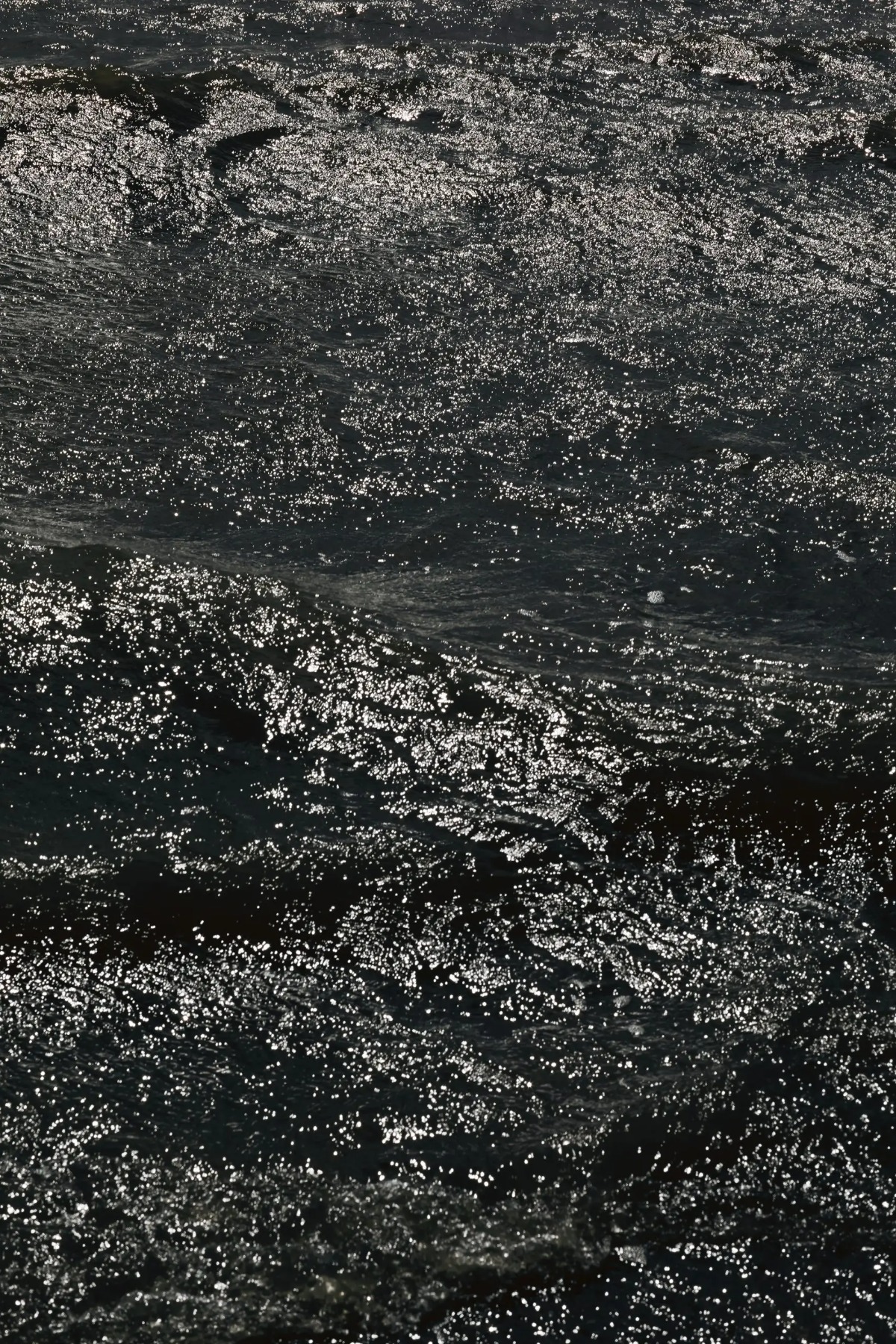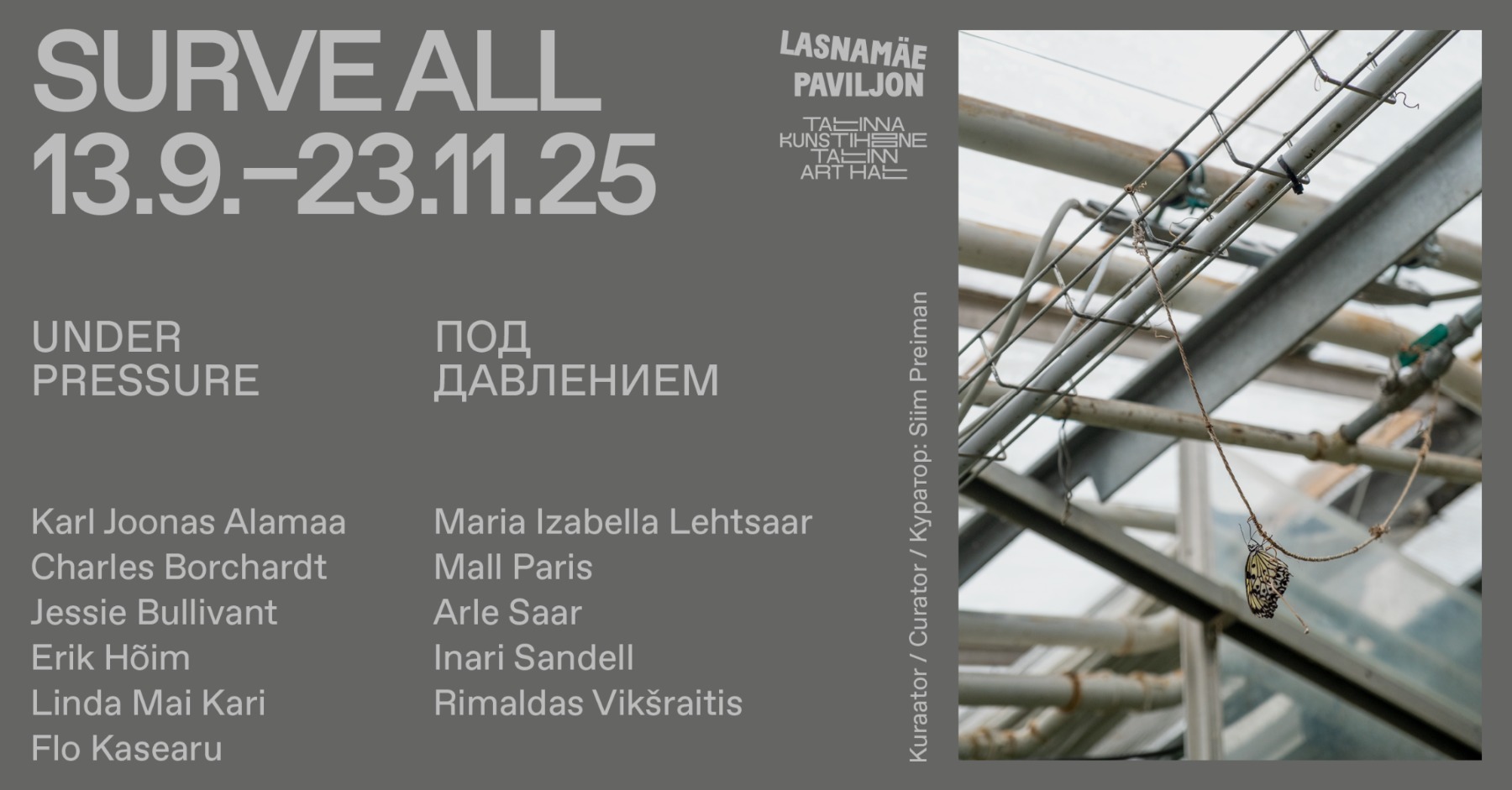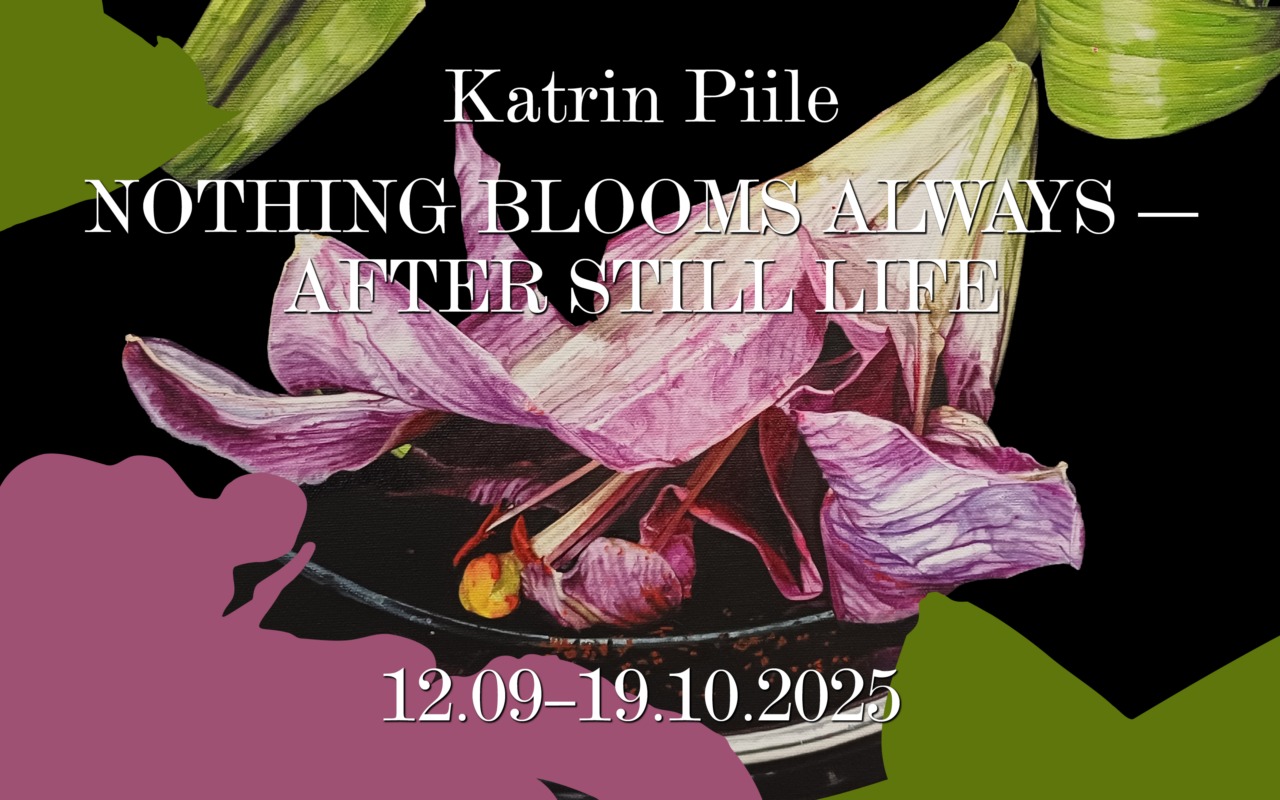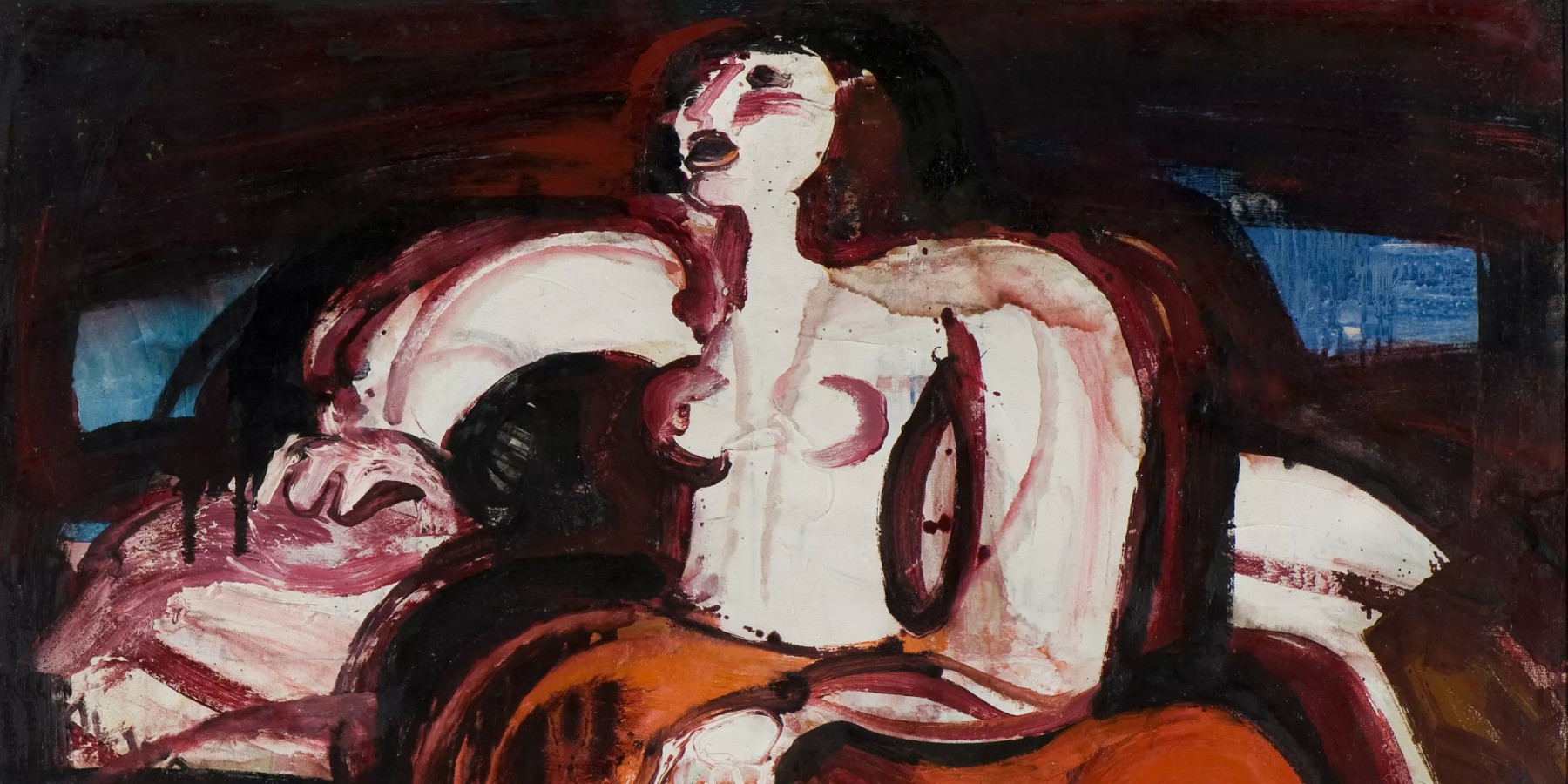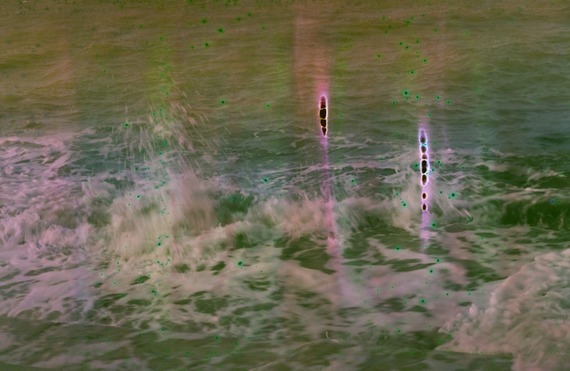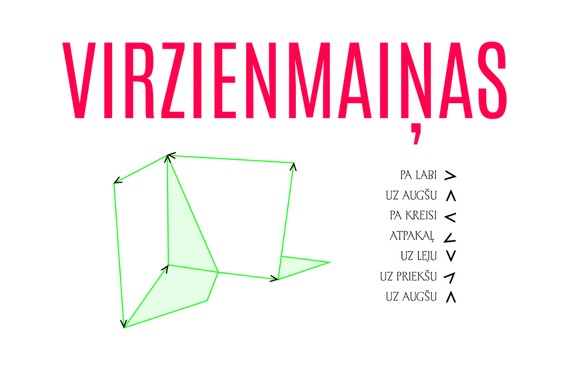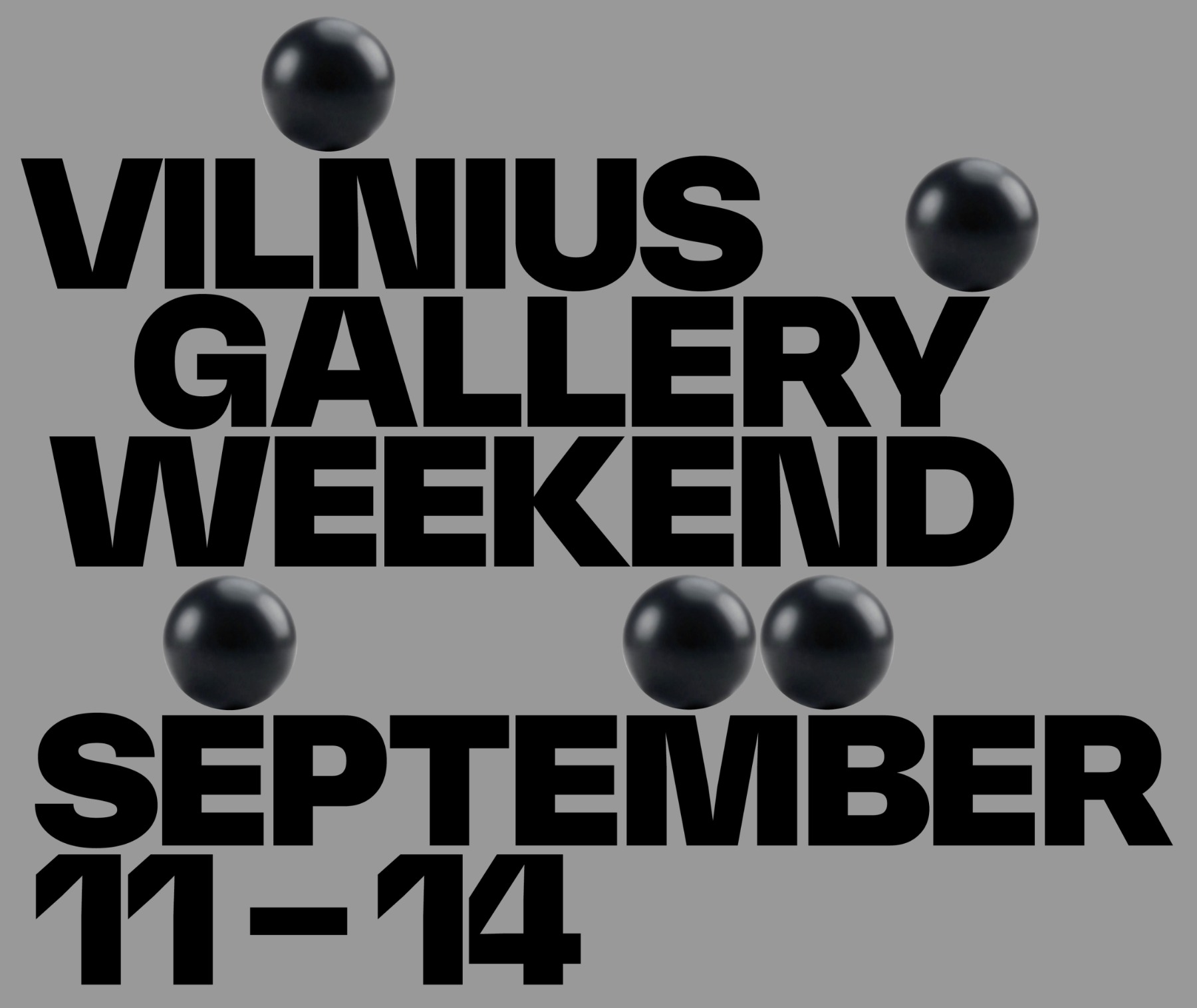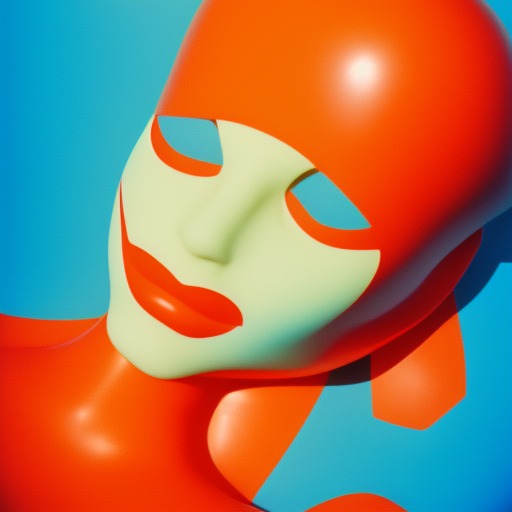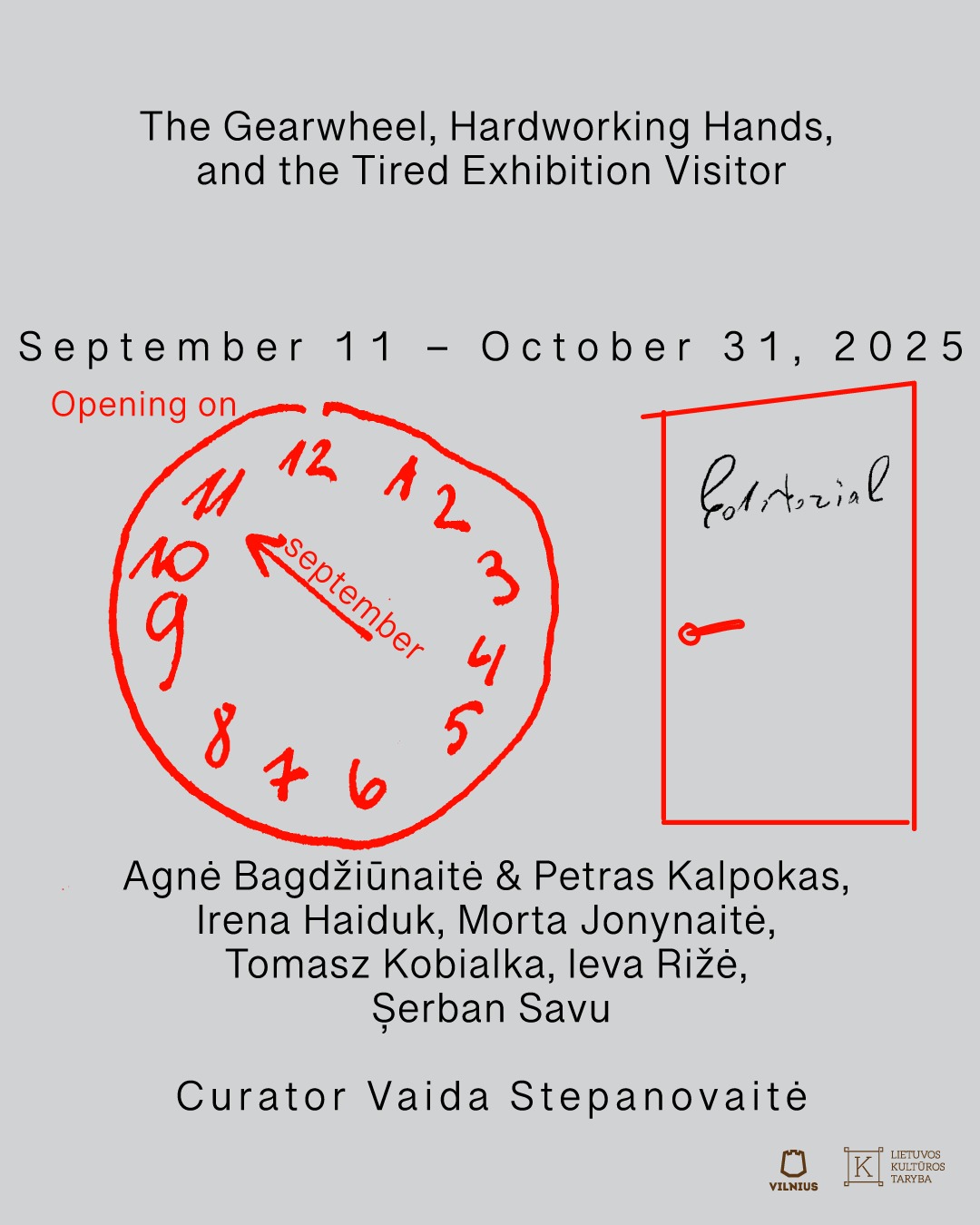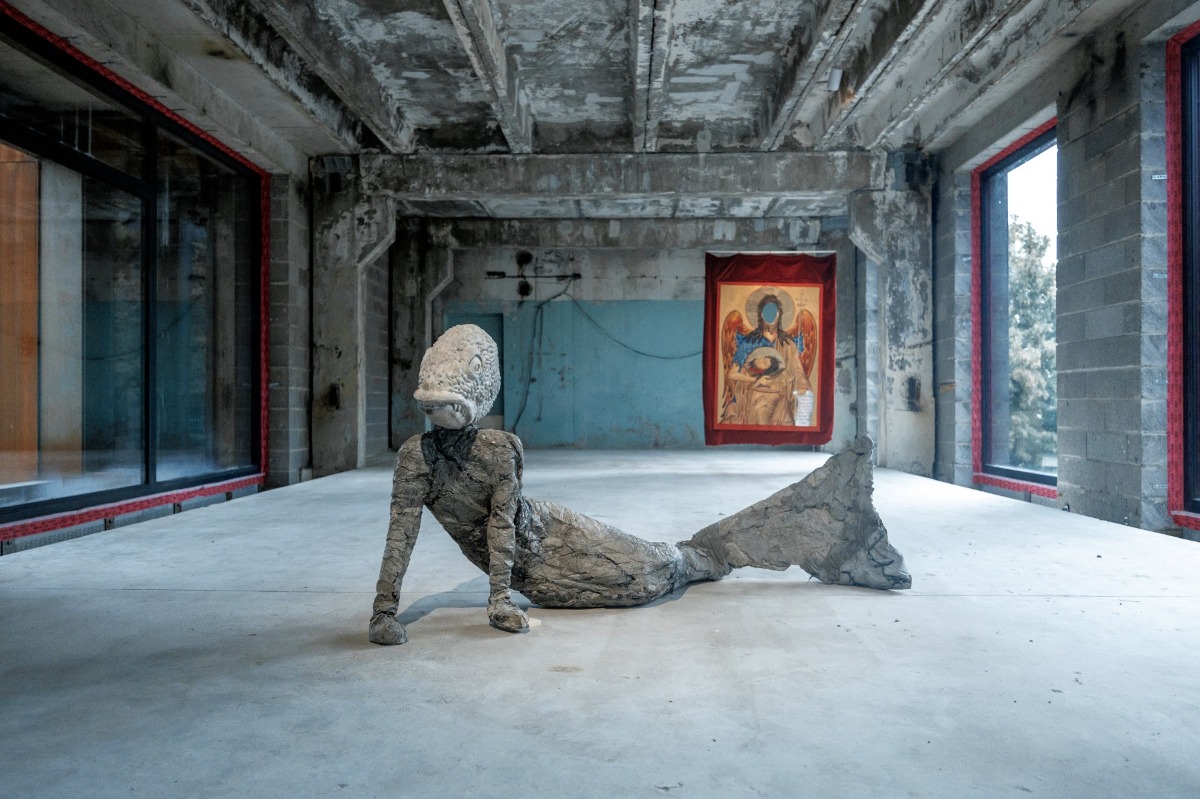
What to See in the Baltics
Must-see art exhibitions in September-October, 2025
This autumn, the Baltic art scene pulses with a rich array of exhibitions and festivals. In Estonia, Tallinn Photomonth returns from September into October, bringing a thoughtful curatorial spine and a wide satellite programme that challenges photography’s boundaries. In Riga, Survival Kit 16: House of See-More inhabits the revitalised former Knitting Factory in Grīziņdārzs, using transformed urban space to provoke questions of public life and transnationalism. In Lithuania the newly launched 1st Klaipėda Biennial (Sunset Every Two Years) explores transformation and transit in Western Lithuania. Meanwhile, Kaunas hosts its 15th Biennial, Life After Life, weaving together states of uncertainty, lingering histories, and unfinished futures. Together, these events speak to a Baltic region in motion — rooted yet restless, local yet engaged with global currents.
ESTONIA, Tallinn
Muravskaja, Tanja. 14-osalisest fotoseeriast Aiad. 2025
Tallinn Photomonth 2025
5 September – 31 October,
multiple venues across Tallinn (main & satellite programme)
The city-wide biennial returns with a tight curatorial spine and a sprawling satellite programme that stages contemporary photographic practice across galleries, public space and off-site venues. The opening exhibition of Photomonth is Tanja Muravskaja’s solo exhibition Gardens: Tanja Muravskaja and Light in the historic Saarinen House. Tanja Muravskaja’s photo series Gardens explores the lines between reality and image, while using water as a means of looking. The sea is not seen here as a mere motif – as it is – but instead the artist transmutes its form, whereas the visible is shaped by light and time.
The international urban space exhibition Shaping the Unclaimed is open in six locations around the Kaubamaja department store’s intersection. In an urban environment saturated with an overwhelming amount of stimuli, the project seeks ways in which art can offer moments of relief and open new perspectives on what we see and experience daily. Six site-specific works will intervene with the urban space on multiple levels, turning up both on the usual walking paths as well as in places that tend to be overlooked. Artists participating in the urban space exhibition: Elo Vahtrik (EE), Eva Stenram (SE/GB), Giovanna Petrocchi(IT), Mare Tralla (EE), Mia Dudek (PL) and Sigrid Viir (EE).
The third exhibition of the main programme, the group exhibition of Estonian and Finnish photographic artists just juuri nüüd nyt, opens on 25 September in parallel at Hobusepea and FOKU galleries. The exhibited works reflect an interrogation of what photography is, not just technically, but also culturally, emotionally, and politically. Some artists dismantle the image to explore its components; others hybridize photography with sculpture or text. Across the board, there’s a restlessness, a desire to move past the image as mere representation, toward something more layered, more alive.
Kai Art Centre
Landscape XXIX, 1985, 90x100cm, oil on canvas, Collection of the Postimees Foundation. Photo by Stanislav Stepaško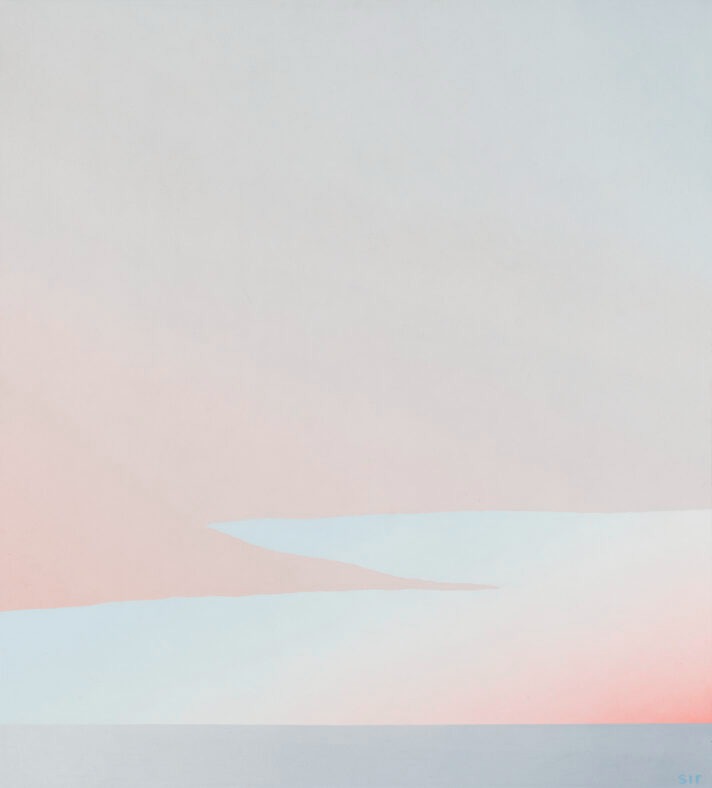
On Fragile Grounds. Sirje Runge and Light
11 October – 22 February
The exhibition is part of the main program of Tallinn Photomonth 2025 contemporary art biennial and it traces Sirje Runge’s engagement with light, color and perception. Best known for her paintings, Runge has worked across media including painting, video, and decades of teaching. Central to her practice is the concept of värviruum, or color space: a living field where light, emotion, and structure interact. For Runge, teaching and making are fundamentally intertwined. Teaching being an art form of its own, grounded in attention and experimentation. Light, too, is not only a material phenomenon, but her greatest collaborator. The exhibition will present a selection of works by Runge ranging from the 1970s to the present day. It will also feature a room dedicated to Runge’s teaching, reconstructing her experimental work with colored papers for exploring light.
A leading figure in Estonian postwar art, Runge is a seeker whose practice unfolds as a luminous inquiry into light, color, and matter. She approaches color as vibration and pedagogy as artistic practice. Centering fragility as both a conceptual and material lens, this exhibition invites viewers to inhabit the liminal space of matter and thought, light and shadow, creation and dissolution. Runge reminds us that the force of art often lies in its ability to hold contradictions, embrace impermanence, and transmute the fleeting into something enduring.
Kumu Art Museum
Anna-Stina Treumund. Drag. 2009. Digital print, pigment photograph. Art Museum of Estonia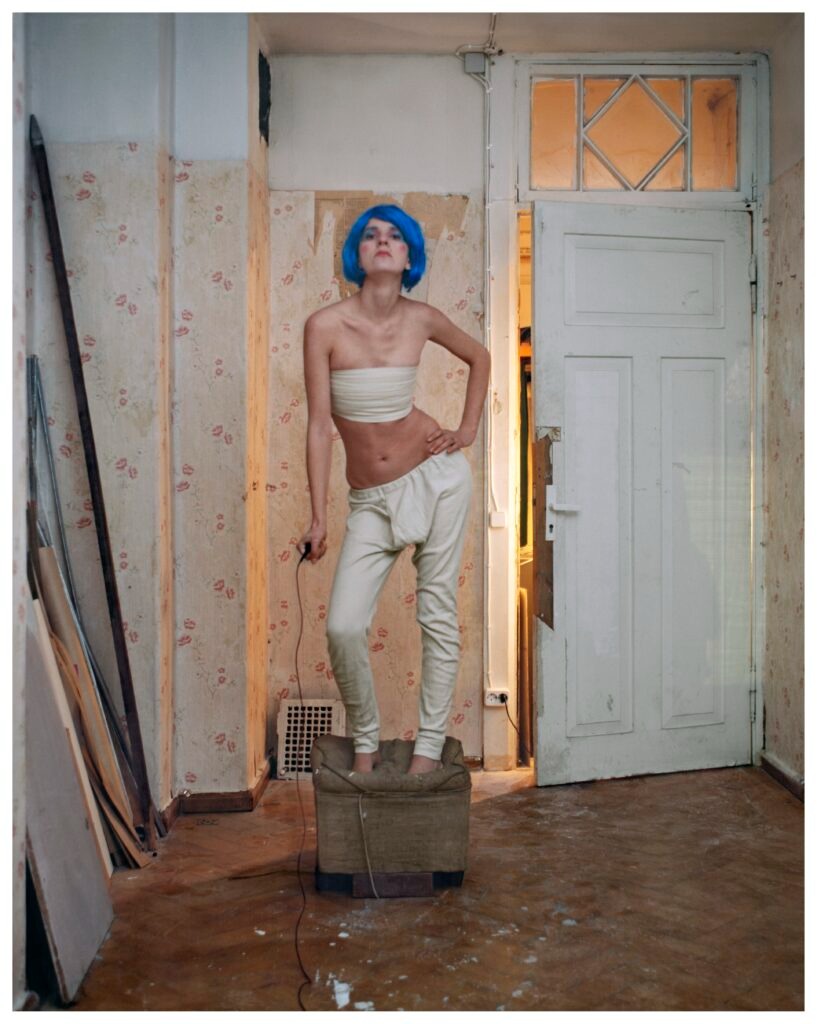
Anna-Stina Treumund: How to Recognise a Lesbian?
Until 11 January
Anna-Stina Treumund (1982–2017) was a feminist artist and activist. She was the first in Estonia to clearly integrate her artist’s position with the experience of being a lesbian. Her art projects of the 2000s and 2010s were seminal in the Estonian art scene and the feminist movement. Her oeuvre is still impactful today, although she never received wider recognition during her lifetime. In an attempt to rectify that mistake, the Kumu Art Museum is holding the largest-ever exhibition of Anna-Stina Treumund’s works and mapping her activities as a photographer, a contemporary artist and an activist. The exhibition also features works by artists who influenced her the most, such as Marju Mutsu and Kai Kaljo, and sets up dialogues between her oeuvre and that of the young artists Janina Sabaliauskaitė from Lithuania and Elo Vahtrik and Maria Izabella Lehtsaar from Estonia, who continue exploring queer and feminist topics in their art practices.
Mari Kurismaa, In the Silence. 1988. Art Museum of Estonia
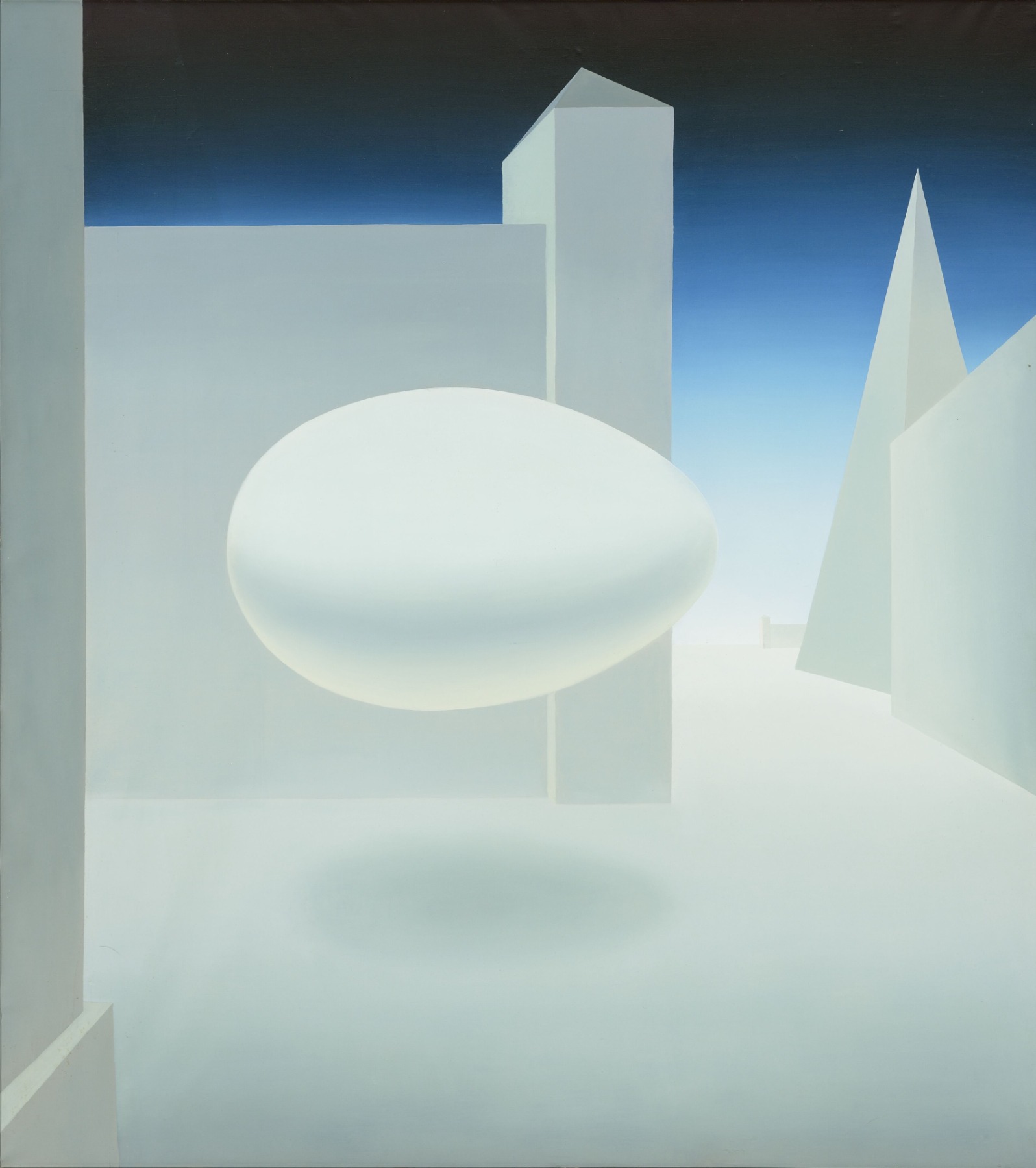
Mari Kurismaa. Twilight Geometry
26 September - 22 February
The exhibition presents the works of the artist and interior architect Mari Kurismaa (1956) from the late 1970s to the early 2000s. Showcasing the diversity of her creative practice, the display includes paintings, drawings and photographs, along with slide installations, carpet designs and architectural drawings. The different genres and media provide unique insight into her work, revealing her characteristic playfulness in exploring the world around us and uncovering its many layers. Curator: Mari Laanemets.
Tallinn Art Hall
Under Pressure
13 September - 11 November
Under Pressure explores how societal norms and expectations shape human life, health, and identity, revealing both visible and hidden tensions. The exhibition features works by Karl Joonas Alamaa, Charles Borchardt, Jessie Bullivant, Erik Hõim, Linda Mai Kari, Flo Kasearu, Maria Izabella Lehtsaar, Mall Paris, Arle Saar, Inari Sandell, and Rimaldas Vikšraitis. The exhibition is curated by Siim Preiman.
Under Pressure grows out of the idea that just as a growing plant does not know whether it is a flower or a weed, a human being at birth cannot foresee what forces and conditions will begin to shape them. The paintings, sculptures, photographs, and videos displayed in the clockwise-moving exhibition within the pink circle of the Art Hall building in Lasnamäe address power, mental health, neurodiversity, gender roles, and family.
Mikkel Museum
Robin Nogisto. Do Punk. 2016. Acrylic. Reiga Kuivjogi's art collection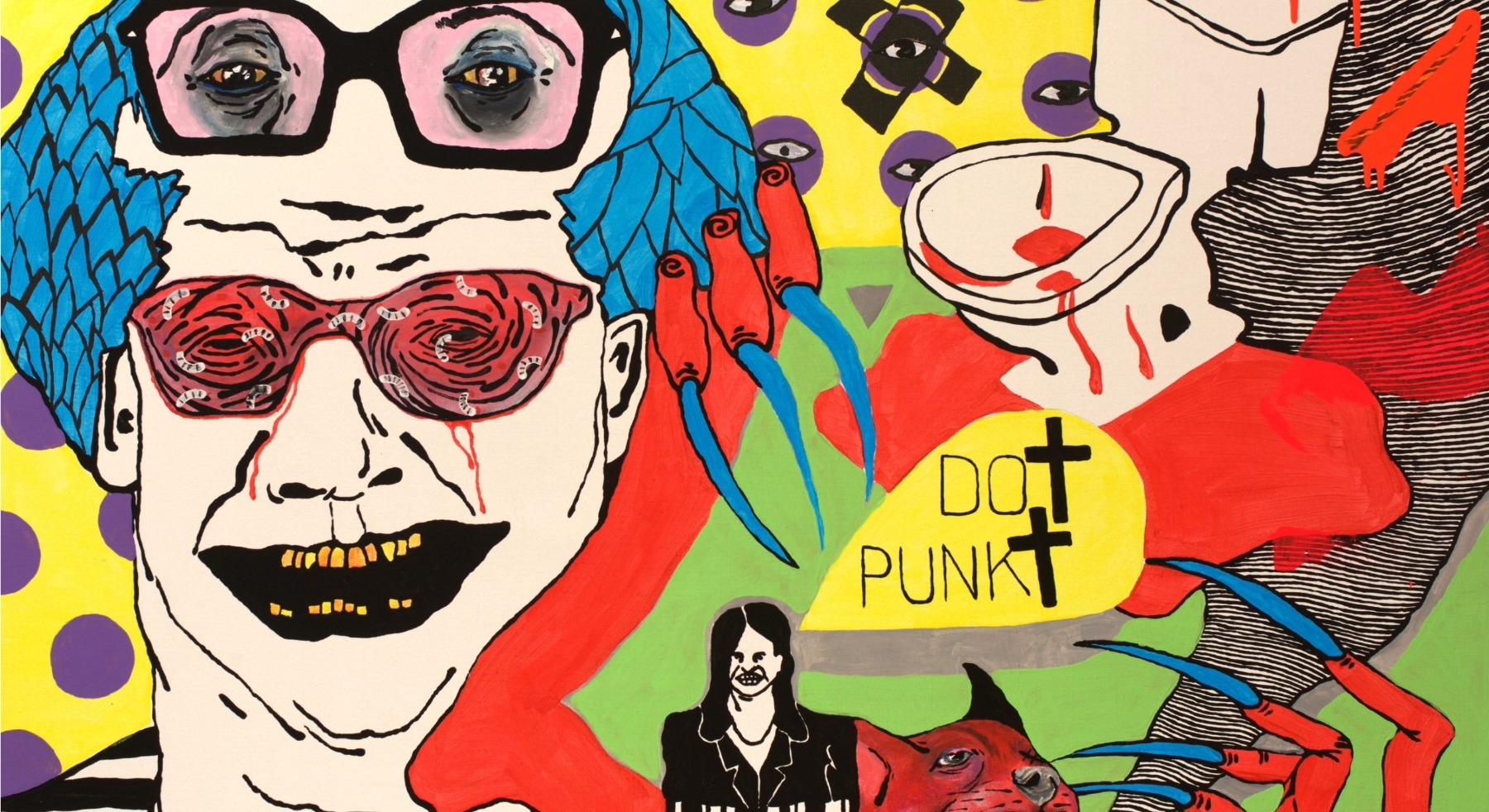
Art Addiction: Reigo Kuivjõgi’s Art Collection
Until 19 October
Reigo Kuivjõgi, a gallerist, art collector and populariser of contemporary art, is a well-known figure in the Estonian art scene. The exhibition offers an opportunity to explore the works of many Estonian artists, from established greats to the emerging talents of the youngest generation. For years, he has tirelessly organised auctions of works by young artists, arranged personal connections with artists and gone to great lengths to acquire paintings. Rather than being merely an “art addict”, he has carefully built an impressive collection.
The exhibition presents an interim review of a long process of collecting and offers the opportunity to explore the works of many Estonian artists, from established greats to the emerging talents of the youngest generation.
Adamson-Eric Museum
Julia Gryboś & Barbora Zentková. One-legged Pigeon. 2021. Residual materials. Courtesy of the artists
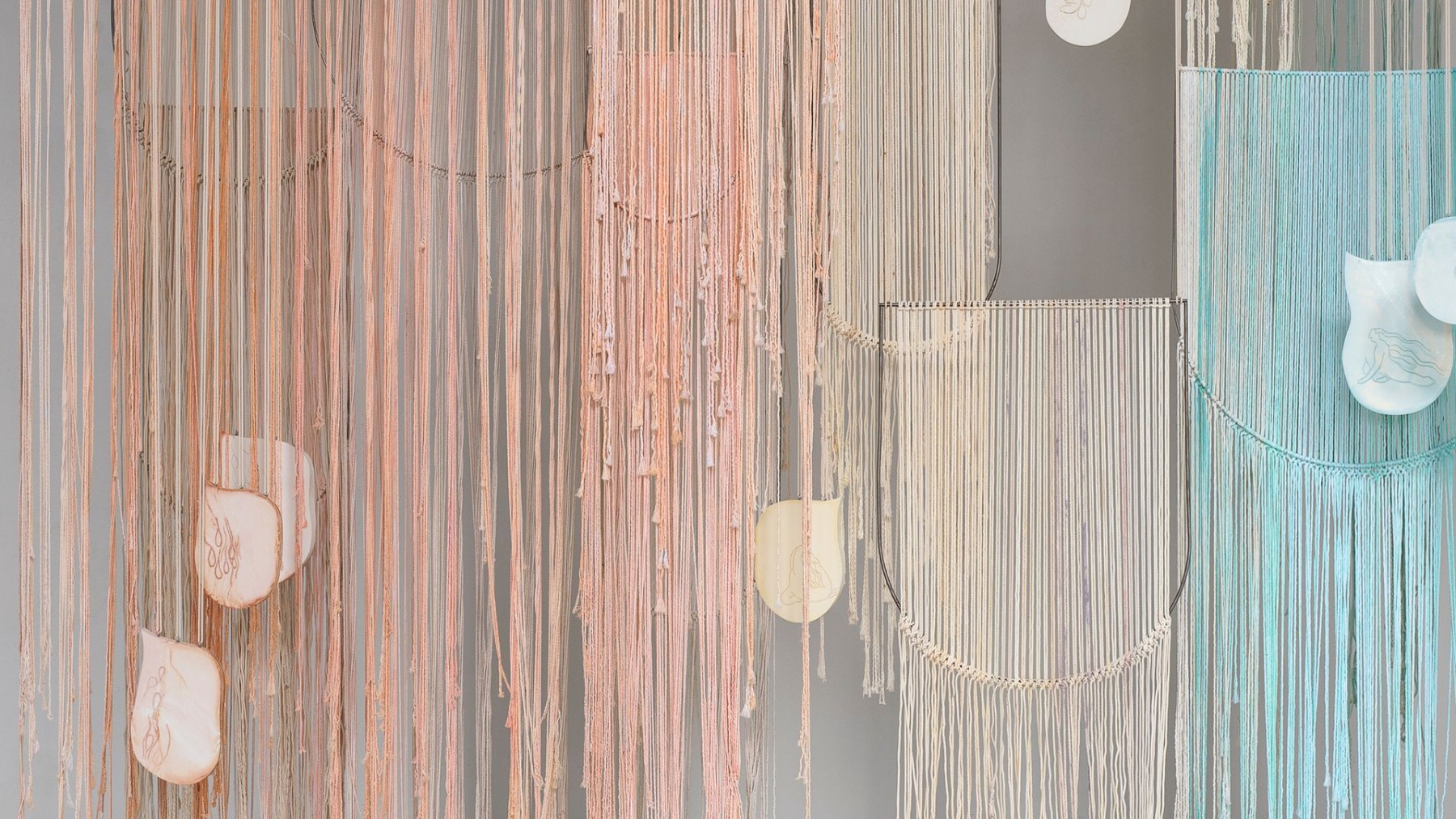
The Politics of Slowness
19 September – 4 January
The exhibition explores what it means to be human in today’s late-capitalist, productivity-driven world, with a focus on slowness and slowing down. Since the late 1980s, a global Slow Movement has been gaining momentum. It emerged as a reaction to the ever-accelerating pace of life in growth-oriented societies, where productivity and efficiency had become more important than human and ecological needs. The “politics of slowness” is a conscious choice: not to rush headlong into overwhelming obligations, but to pause, to do less, yet in ways that are more meaningful.
In recent years, “slow” technologies, craft techniques, and traditional materials have been increasingly incorporated into contemporary art. Artists are increasingly prioritising care and responsibility in their practices and consciously making sustainable choices. Artists: Julia Gryboś (PL) & Barbora Zentková (SK), Tõnis Jürgens (EE), Sandra Kosorotova (EE), Nele Kurvits (EE), Sten Saarits (EE), Killu Sukmit (EE), Gintautas Trimakas (LT), Johanna Ulfsak (EE), Sigrid Viir (EE), Krista Vindberga (LV), Elīna Vītola (LV) & Ieva Kraule-Kūna (LV)
Fotografiska
Amber, Kensington, Philadelphia, USA. 2023 © Bruce Gilden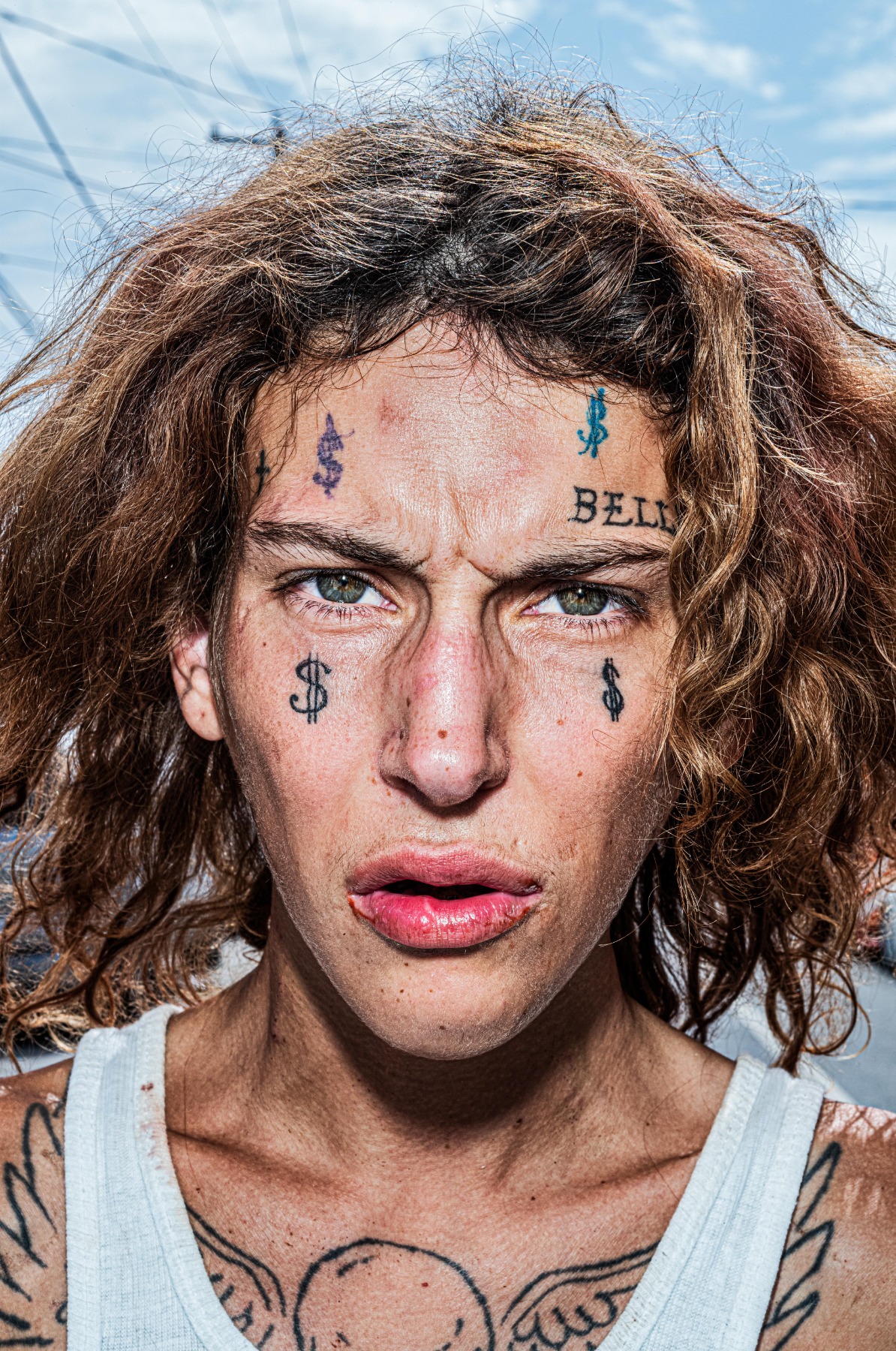
Bruce Gilden. These?
Until 2 November
Bruce Gilden’s fiercely bold exhibition Why These? shines a light on the wide spectrum of society, bringing to center stage real people from back alleys, everyday life, and the true, unfiltered corners of the world. With a raw, provocative close-up style, Gilden’s dark humor serves a brighter purpose – to foster greater understanding between people. By exposing what lies just beneath the surface, he captures the fears that shape how we see ourselves and those around us.
Bruce Gilden, (b. 1946), a legend in the world of street photography, began his career in 1967. He captures scenes and people that others might consider intimidating, risky, or even repulsive. He is never merely a spectator, but actively seeks out faces that reveal more than they conceal – signs of grief and joy, desire and loss, intoxication and destruction. It is like a map of life.
EKKM
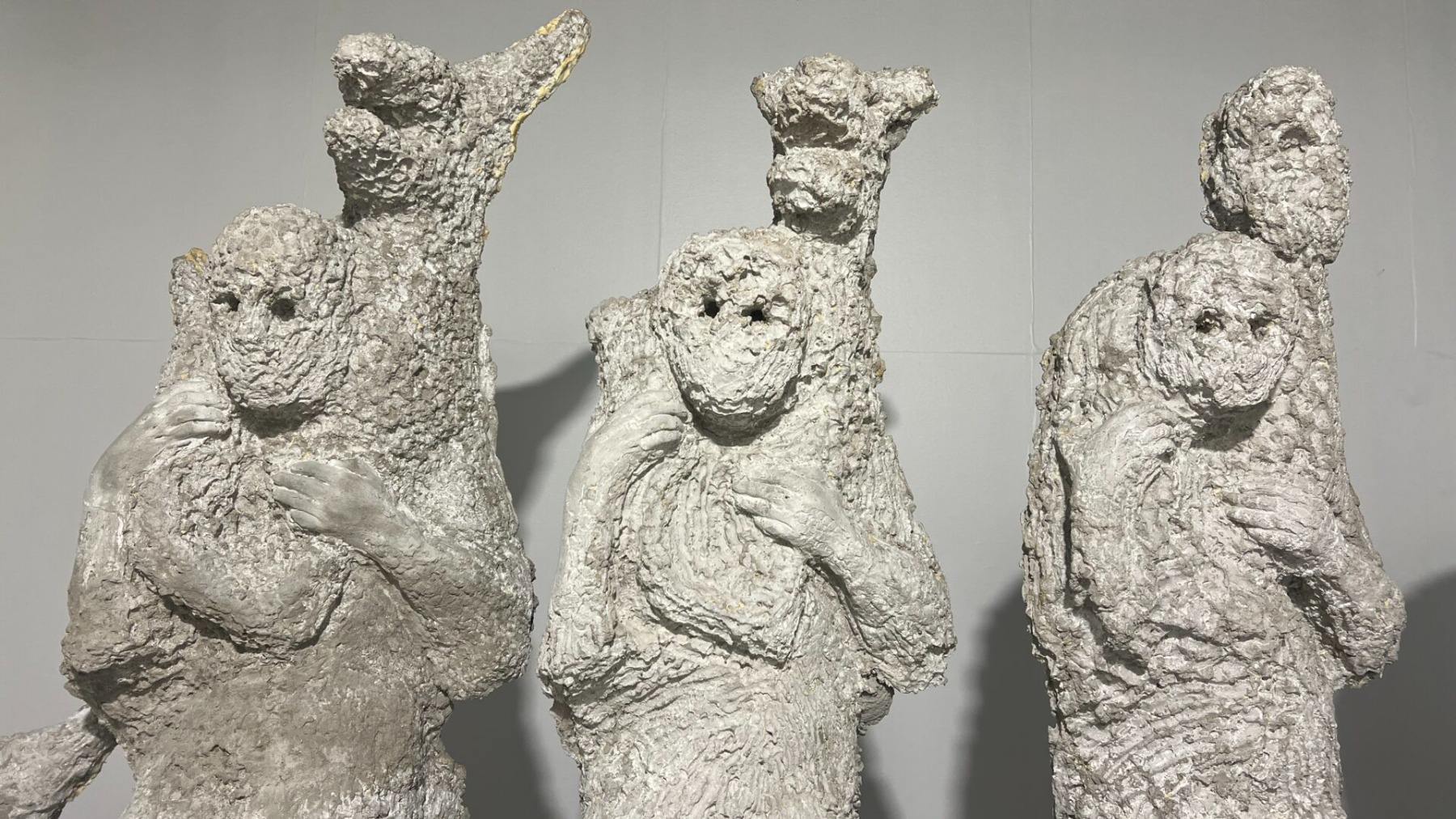
Jass Kaselaan. Shepherd. Grave. Human with Wings
Until 2 November
EKKM’s autumn programme opens with a new installation by Jass Kaselaan, whose practice moves between sculpture, found material and sound. The show builds dense, tactile assemblages and sculptural tableaux that read like rituals for unknown futures – physical objects that insist on bodily attention and invite a measured, contemplative pace in a museum known for experimental programming.
With sensitivity, totality and humanity so characteristic to Kaselaan, he has created new sculpture and drawing series for the exhibition that address themes and motifs which in a broader social context seem to be considered with anxiety and erratic uncertainty. Encompassing all three floors of the museum, with consistency and calm, Kaselaan explores the difficulties that sometimes can break a person. Or give them wings. In 2014, Jass Kaselaan won the Köler Prize and this is the first time since then he returns to the Contemporary Art Museum of Estonia.
Temnikova & Kasela Gallery
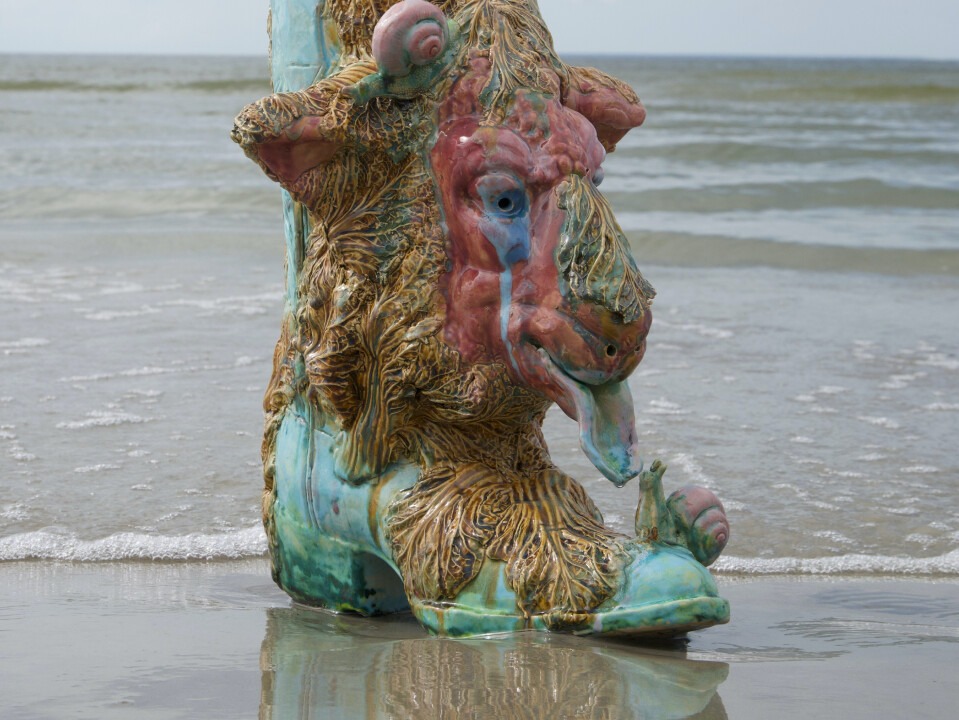
Kris Lemsalu. Nirvana
Until 11 October
Kris Lemsalu (b. 1985, Tallinn) is an internationally renowned artist whose practice combines sculpture, performance, and installation. Her works question the boundaries of human experience, moving between the poetic and the grotesque, the mystical and the everyday.
The artist describes her new exhibition as follows: At last, I am a Zen conceptualist. An exhibition titled NIRVANA. Only ceramic sculptures. These four torsos are bodily poetry – haikus about the body, expanding into nature, sinking into the soil, and being reborn. Look at the works as you would at clouds in the sky: take your time, and you will see which characters and which stories appear. Nirvana is arrival itself, and the celebration of the cycle of life.
Tütar gallery
Katrin Piile. Nothing Blooms Always – After Still Life
12 September – 19 October
Katrin Piile’s painting is an excellent example of a decoy image, a convincingly familiar optical illusion (trompe l'oeil) on a two-dimensional canvas surface – a fleeting sensation where an optically recognizable image suddenly becomes spatial in the mind, and picture and space merge into one. As viewers, we instinctively believe that what we are seeing is true, even though our reason tells us it cannot be so.
Katrin Piile graduated from the Estonian Academy of Arts with a degree in painting in 2010, although she has been exhibiting her work since 2006. Piile became a member of the Estonian Painters Association in 2019 and joined the Estonian Artists Association in 2023. In 2020, she was awarded an art prize by the heirs of Malle Leis, renowned during her lifetime as a master floral painter. In 2024, Katrin Piile received the Konrad Mägi award, the oldest and highest professional honor for painters in Estonia, which, according to regulations, can be awarded only once in a lifetime.
ESTONIA, Tartu
Kogo gallery
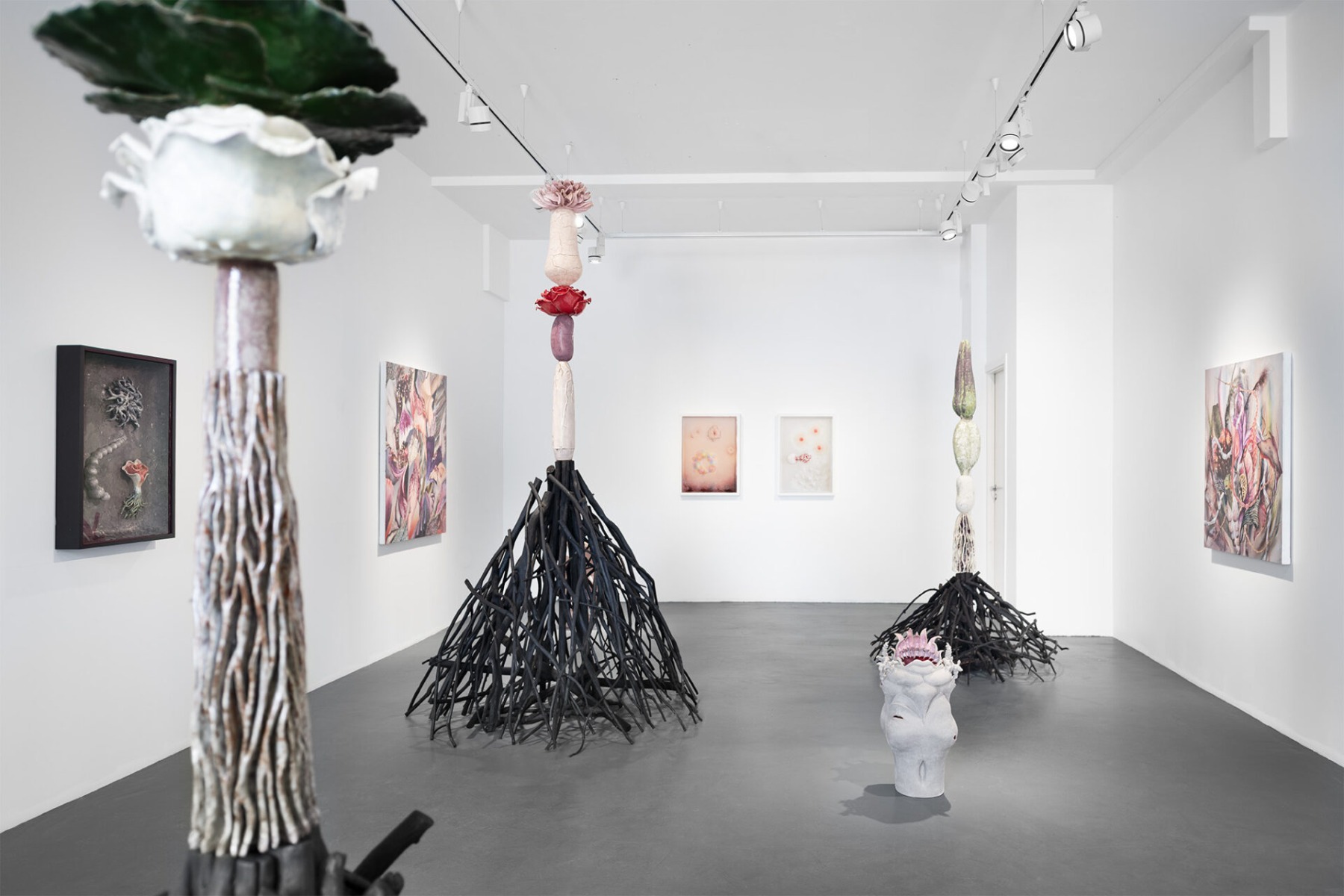
Paweł Matyszewski. Momentary Organisms
Until 27 September
Paweł Matyszewski’s solo exhibition Momentary Organisms unfolds as a fascinating hybrid ecosystem – a floating garden, inner laboratory, and composter – where pulsating, Frankenstein-like forms embody both the beauty and inherent fragility of a world in flux. Paweł Matyszewski’s created worlds are exuberant landscapes full of pulsating organisms that are as inviting and mesmerising as they are disturbing and strange. Full of romantic notions and political emergencies, beauty and sensuality, as well as decline, his patchwork-like abstractions can be seen as nature in constant flux, processing all living tissue, composting bodies, knowledge and emotions into new, marvellous substances. Paweł’s approach can be described as Frankensteinian, as he constantly attempts to create images of new organisms by dissecting and restitching together different plant and human body parts. Everything in his works is positioned in a fusion of shared relationships that highlights the interconnectedness of species.
Momentary Organisms is organised in collaboration with Le Guern Gallery in Warsaw, which focuses on exhibiting the work of emerging artists from the Polish and international art scene.
LATVIA, Riga
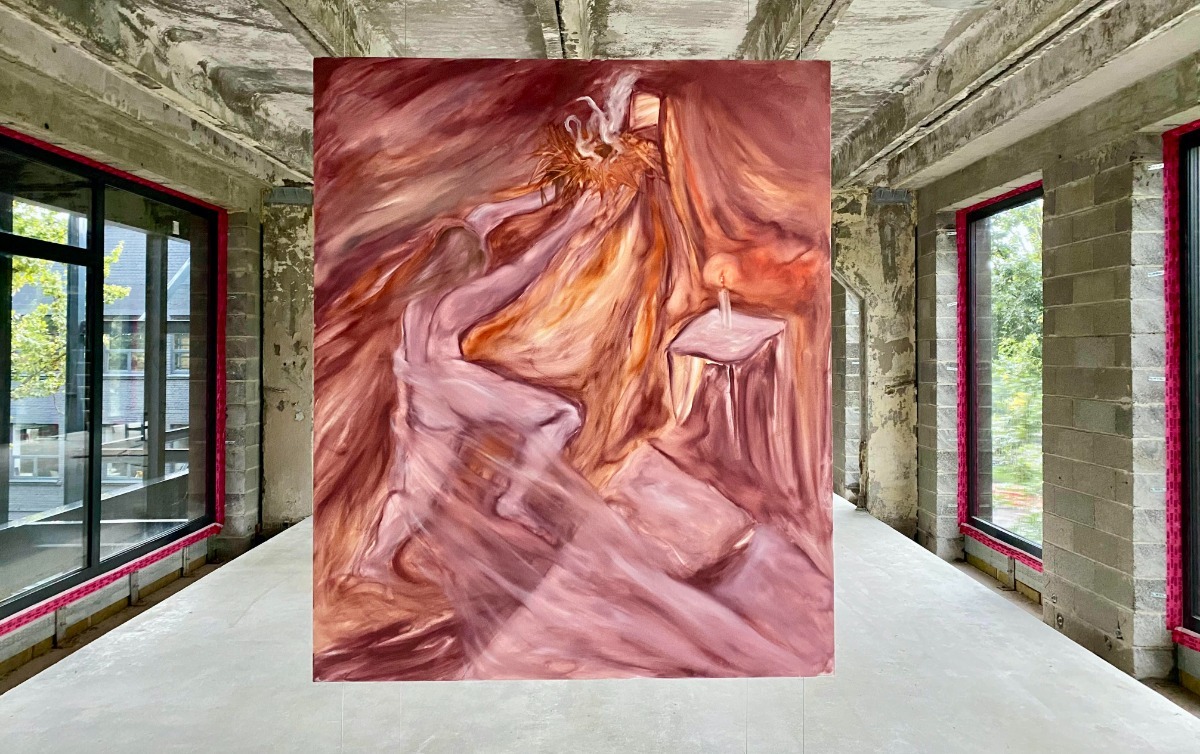
Survival Kit 16: House of See-More
Organized by the Latvian Centre for Contemporary Art (LCCA) and curated by Slavs and Tatars and Michał Grzegorzek, the Survival Kit 16 exhibition, titled House of See-More, features 23 artists and is held at the creative quarter Grīziņdārzs, located at Zemitāna iela 9, Riga. The venues of Survival Kit – typically abandoned or unused buildings – have always been a core part of the festival’s identity, serving to map urban development strategies and spotlight the potential of overlooked spaces. This year, for the first time in the festival’s history, Survival Kit takes place within a contemporary architectural project, the revitalised site of the former Riga Knitting Factory – in the Grīziņdārzs creative quarter – a location that is dynamically transforming from a “placeless” place into a new urban centre.
Taking Simurgh – the mythical bird found across Eurasia – as a departure point, the annual international contemporary art festival in Riga addresses the critical state of transnationalism via the flamboyance of the flaming bird, an understanding of liberation as both metaphysical and political.
More info >>
Read our interview with one of the Survival Kit 16 curators, Payam from Slavs and Tatars
Latvian National Museum of Art
Džemma Skulme. Folk Song. 1969. Oil on canvas. Collection of the Latvian National Museum of Art, Riga. Photo: Normunds Brasliņš
Džemma
Until 25 January
The artist Džemma Skulme (1925–2019) both in her painting and personal conviction about the role of culture in a broader context, was always guided by the measure of human basic values – a spiritual vertical rooted in the heritage of folk culture.
The goal of this exhibition is not only to explore the situation of art and society in Soviet-occupied Latvia through the creative contribution of a single author but, more crucially, to highlight the individual will of the artist’s personality to speak about what was essential to both herself and her people despite ideological constraints. Džemma Skulme’s art is a testament to how, under conditions of censorship, she gradually liberated herself from the state-imposed Socialist Realist expression, including ideological pathos, through expressive painting language. The artist’s personality and public stance have undeniably had a significant impact in Latvia both during the Soviet occupation and after the restoration of Latvia’s independence. As the Head of the Artists’ Union of Latvia (1982–1992), she actively participated in the National Awakening movement and, in the turbulence of political times, playing a direct role in the country’s fight for independence.
Carlo Carrà. A Pine by the Sea. 1921. Oil on canvas. Collection of the Pitti Palace Gallery of Modern Art, Florence, Italy. Publicity photo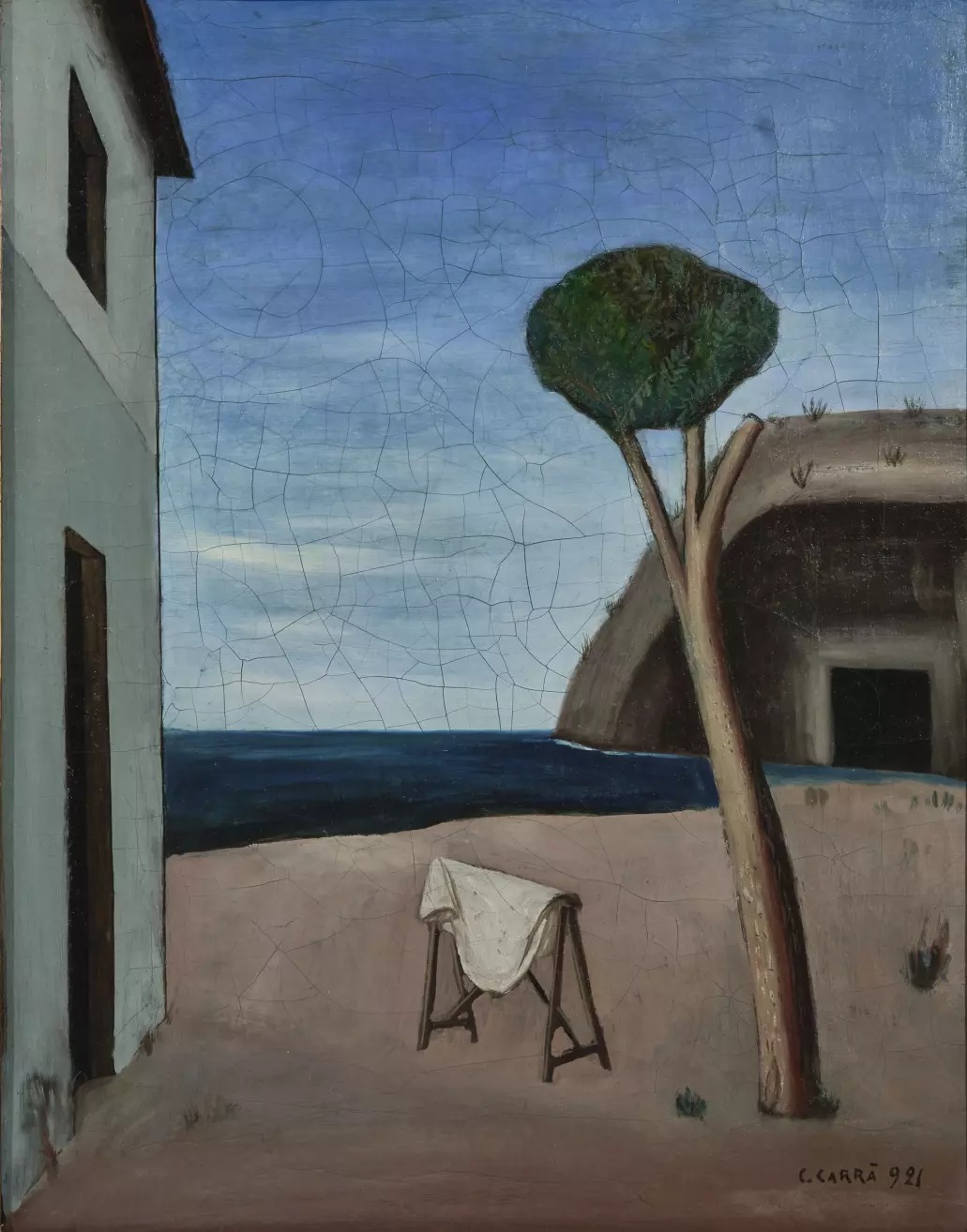
Light from Italy: From Fattori to Morandi
Until 30 November
For the first time in Northen Europe, a substantial collection from the Uffizi Galleries (Le Gallerie degli Uffizi) in Florence is exhibited – 74 masterpieces from the permanent exhibition and holdings of the Pitti Palace (Palazzo Pitti) Gallery of Modern Art. This selection reflects the main movements and directions of Italian art, from the Macchiaioli group to Divisionism, from Symbolism to forms of Italian Expressionism, from Futurism to Modern Classicism. The story of Italian art from the unification of Italy in 1861 to the interwar period of the 20th century is complemented by historical parallels with significant events in Latvia and a dialogue with highlights from the collection of the Latvian National Museum of Art (LNMA).
The works of Italian artists are displayed in the exhibition in conversation with late 19th century and Classical Modernist heritage from Latvia, which art experts in Latvia and around the world consider to be among the most internationally recognized aspects of Latvian cultural patrimony. This approach supports a deeper narrative of the shared cultural ties and interactions between the two countries and across Europe as a whole. The title of the exhibition, Light from Italy, reflects a trend from the mid- and late 19th century – light became the principal element in the worldview of several artistic movements. It is no coincidence that the end of the 19th century is called visual art’s “years of light”, when fundamental changes took place in the aim, content and form of art. Artists in both Italy and Latvia were captivated by solutions for using light or its lack to tell a story and create a special mood.
Riga Contemporary Art Space
Anastasia Shneps-Shneppe, Rebecca Korn “Water blossom”, 2022
Laimdota Malle, Anastasia Shneps-Shneppe, Rebecca Korn. I Bit the Skin of a Glass Lagoon
Until 26 October
The exhibition "I Bit the Skin of a Glass Lagoon" explores the fragile boundary between body and landscape, where the “glass lagoon” emerges as a metaphor for a world that is beautiful, delicate and intimate, while the “bite into its skin” signifies a bodily closeness to the environment – simultaniously sensual and violent.
Artists Laimdota Malle (LV), Anastasia Shneps-Shneppe (LV), and Rebecca Korn (UK) work across installation art and interdisciplinary research. Malle’s sculptural works traverse the porous line between inner and outer landscapes, balancing the organic and synthetic to reflect on posthuman ecologies. Shneppe and Korn's artistic practice examine the body as a vessel of generational memory, bringing together autoethnography, hydrofeminist theory, and material inquiry.
Environmental art exhibition. SHIFTS
Until 26 November
The title of the exhibition Shifts proposes a multi-layer dialogue on the concept of environmental art and its multiple interpretations. Simultaneously, ‘shifts’ describes the transformation undergone by the former Department of Interior Design and Decoration of Art Academy of Latvia founded by Voldemārs Šusts in 1964, currently known as Department of Environmental Art.
Through interaction with the ideas presented at the show, the viewer can also become acquainted with a vast range of artistic devices. While accentuating the diversity of the artistic process and exploring various methods of research, including transference of the physical to the digital environment and incorporation of virtual and enhanced realities, as well as systems created in the data realm, the artists touch upon an extensive array of personally and socially relevant subjects. The X, Y, Z parameters; time; thought: these components reveal the fluidity of the world. The existing boundaries and the currently defined space are subjected to re-examination every second. Experience serves as inspiration for an abundance of ever-new combinations, demonstrating the diverse potential of a single point of departure.
Kim? Contemporary Art Centre
Photo; Ansis Starks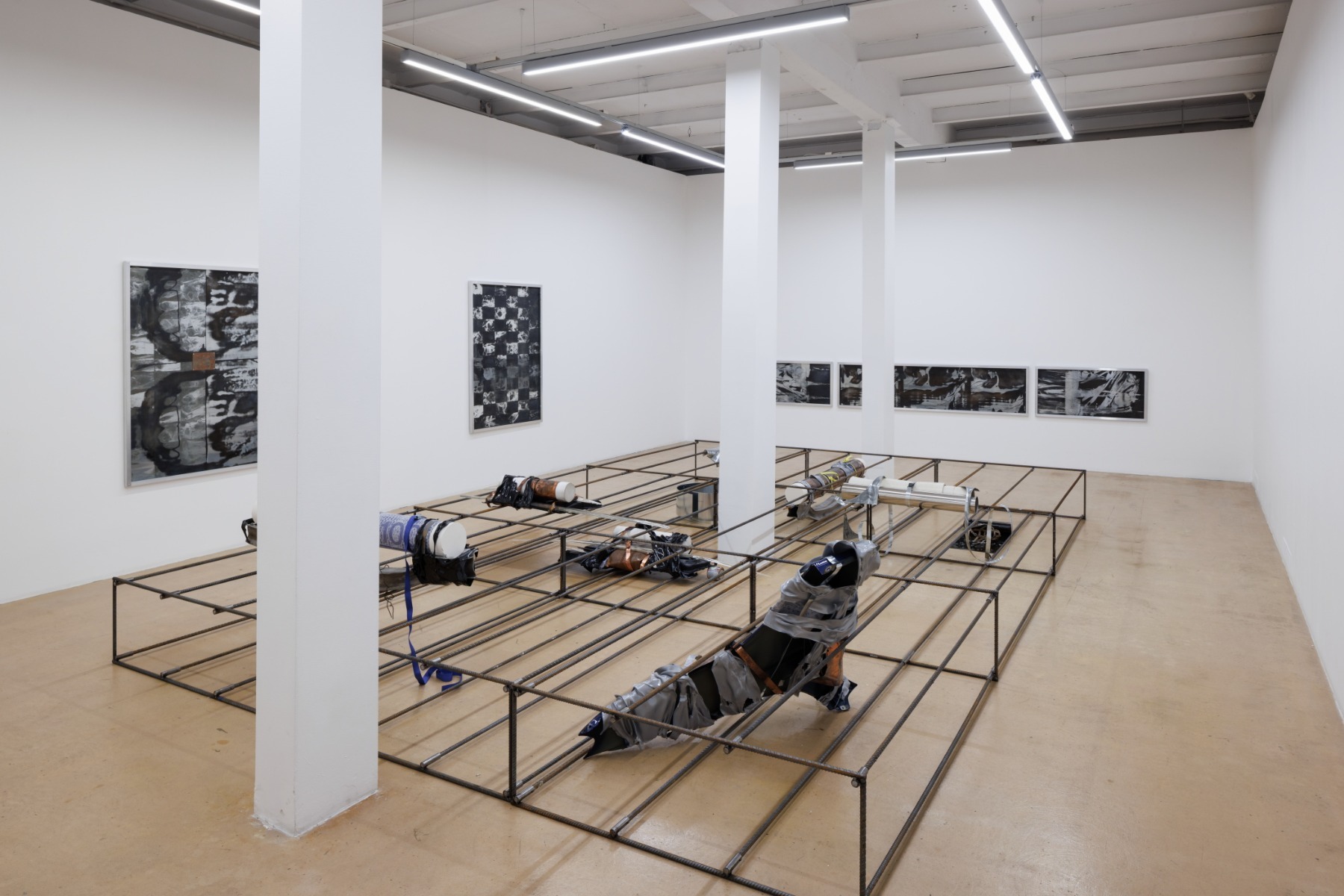
Anastasia Sosunova. Spit Bite
Until 28 September
Spit Bite, the first Anastasia Sosunova’s solo presentation in Latvia joins new and existing works into a multi-faceted exploration of DIY, fan labour and the search for the origins of the copy as such. The artist proposes a term coming from the printing jargon, spit bite, in which acid is directly applied on the printing plate, biting into the metal as it touches upon the surface. Indeed, still or moving, innumerable images are spit onto the world, leaving bite marks. At Kim?, Sosunova’s etched un-inked matrixes freezing the images in a nascent state of pure potential and reproducibility are juxtaposed with the latest video and sculpture works. The latter – a hardware store fan art of sorts: quoting sacred texts, performing rituals and searching for secret symbols embedded into the logos, architecture, and even discount booklets of one business empire. At the core, Spit Bite reflects on the artists’ interest in the making and circulation of images, desires and followings, their reciprocal contaminations, their crossbreeding, and their survival.
Anastasia Sosunova (b. 1993) is an artist based in Vilnius. Sosunova holds a BA in Graphic Art and an MA in Sculpture from the Vilnius Academy of Arts. Her multidisciplinary practice comprising video, installation, sculpture, and graphic art, centres on the multifaceted connections between signs and faith in contemporary society, exploring manifestations of magical thinking and the mobilisation of communities.
More info>>
Zuzeum Art Centre
Josef Hartwig (game design), Joost Schmidt (packaging typography), The Bauhaus, set, model XVI, 1924, maple, © VG Bild-Kunst, Bonn 2020. Foto: A. Körner, bildhübsche Fotografie, Institut für Auslandsbeziehungen
The Whole World a Bauhaus
10 October – 28 December
The reception the Bauhaus has become both a celebrated and yet controversial symbol of modern design and avant-garde approaches to life. Although the school was only in existence from 1919 to 1933 at different locations (Weimar, Dessau, Berlin), it has a unique standing as an exemplary representative of a modernist new start. In these years, only around 1,300 students trained at the Bauhaus – how did this school achieve such a remarkable influence, as the epitome of radical renewal in society, in design and in teaching? What makes the Bauhaus so special? Why are its products still made today? The exhibition title, The Whole World a Bauhaus, taken from Bauhaus student and teacher Fritz Kuhr (1928), is in many ways programmatic. It alludes to the fact that the Bauhaus redefined the parameters of art, the crafts, and technology, when Walter Gropius declared the aim of design to include the whole spectrum of design and also social practice in every sense. The exhibition title also refers to the fact that this is a touring exhibition which will address connections and look at the role of modernism at different venues, where it will serve as a platform for learning.
“The Whole World a Bauhaus” is divided into eight different chapters, each focusing on an aspect of work and life at the Bauhaus between 1919 and 1933.
Māksla XO Gallery
Photo: Renārs Derrings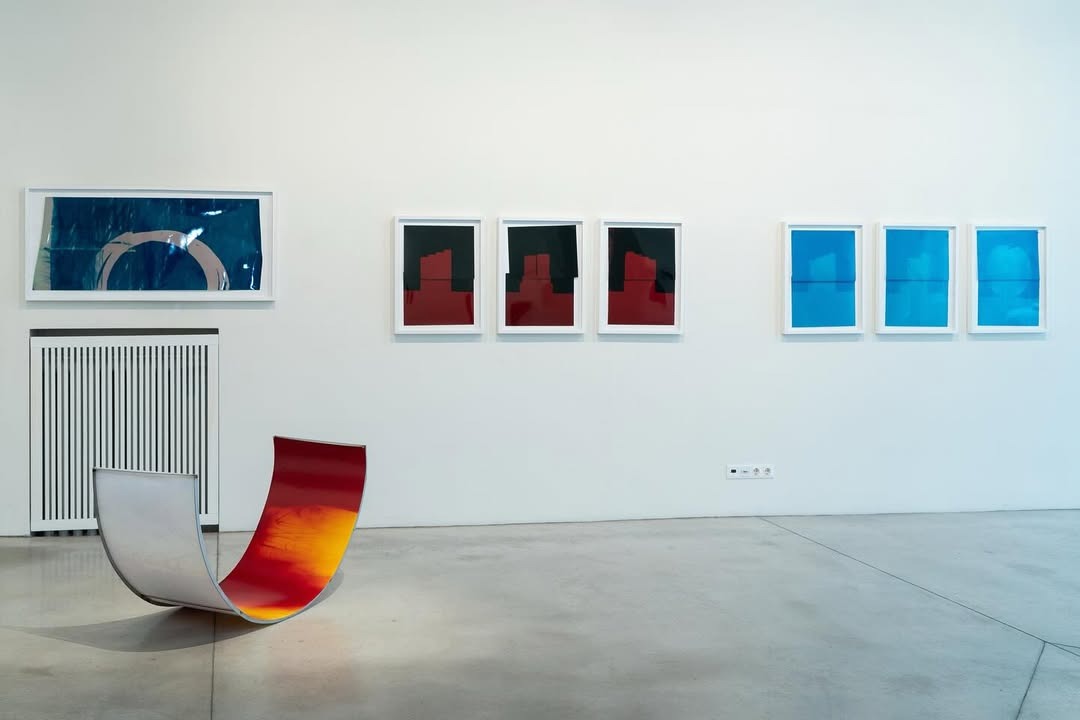
David Penny. Soft Fields
Until 11 October
The exhibition was created by David Penny, a British photographic artist and researcher of light and image, in collaboration with physicists from King’s College London during advanced research into nanomaterials; it has been supported by SODA at Manchester Metropolitan University, the Royal Society, and AN Artists Bursary (UK). David Penny’s practice encompasses photography, moving image and sculptural installation, thinking expansively around photography, materiality, objects and their images. He redefines the boundaries of photography through a unique, cameraless technique that merges science and art. By bridging laboratory methods with artistic intuition David Penny offers a fresh and speculative perspective on photography and its relationship with material objects. His “cameraless” photographs, made entirely without the use of a camera, explore the environment of the scientific laboratory, the photographic darkroom and the studio as sites of experimentation, artistic research and discovery. Several abstract series were created by capturing light in a nanophotonics laboratory, without using a camera. By placing sheets of photographic film in or near the path of high-powered lasers travelling through a system designed for nanomaterials research, he produces unique photograms. In “Soft Fields”, these works are presented in multiple series, encompassing wall-mounted photographic pieces and installations featuring undulating photogram sculptures.
Galerija ASNI
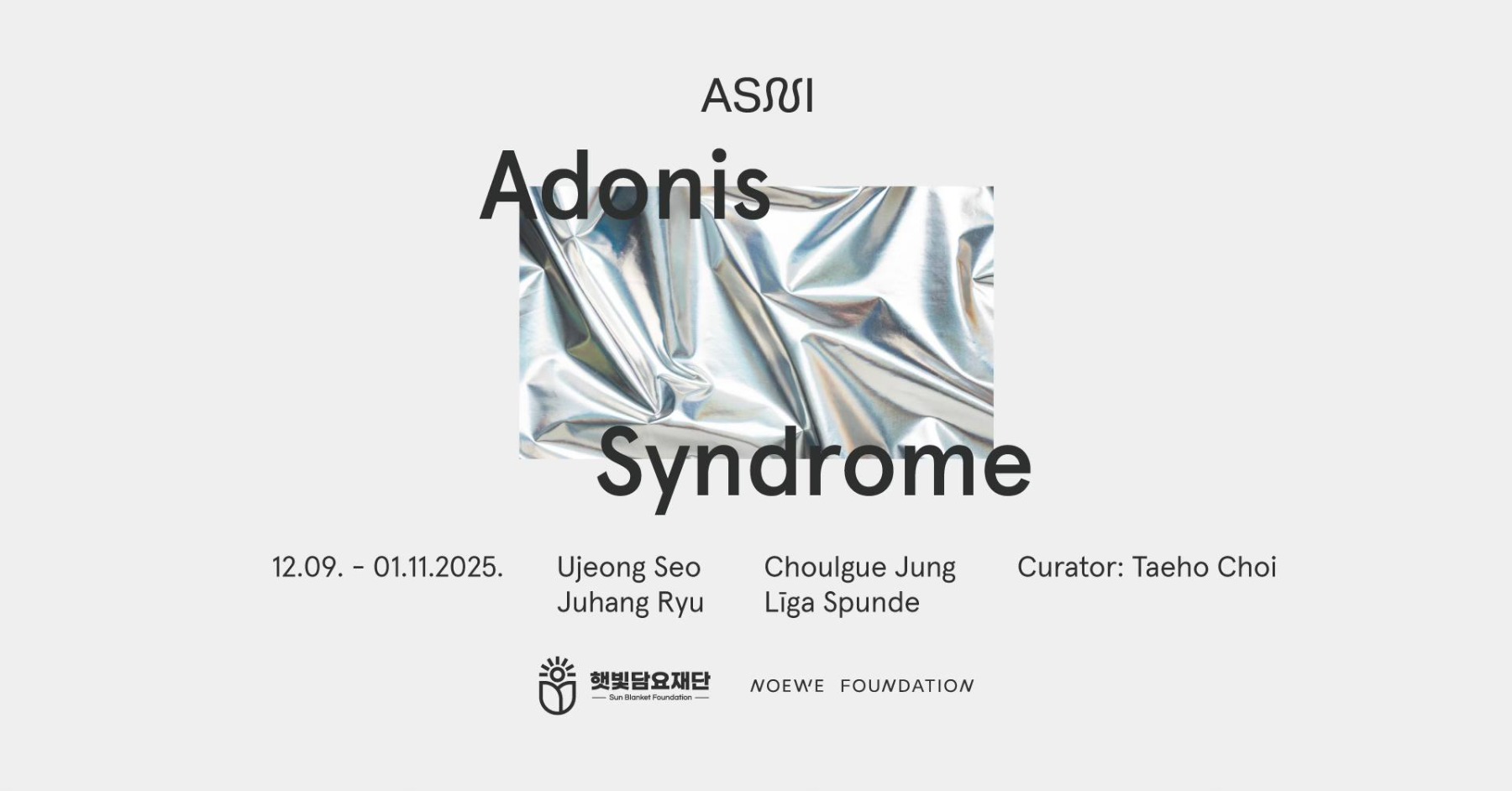
Adonis Syndrome
12 September - 1 November
Adonis Syndrome brings together Korean artists Ujeong Seo, Juhang Ryu, Choulgue Jung, and Latvian artist Liga Spunde to explore society’s obsession with appearance and the pressures of beauty standards through the language of contemporary art. The exhibition begins with the particularly visible phenomenon of appearance-centered values in Korean society, reflecting on it within a regional context while at the same time expanding it toward broader, universal concerns. The artists employ painting, installation, photography, digital images, and animation, interpreting visual structures through their own artistic languages.
Curator: Taeho Choi.
LATVIA, Daugavpils
Rothko Museum
Karina Marusińska, “Self-Destruction”, ceramics, synthetic materials, earth, ash, mixed media, diameter 75 cm, 2023, photo by Paweł Góral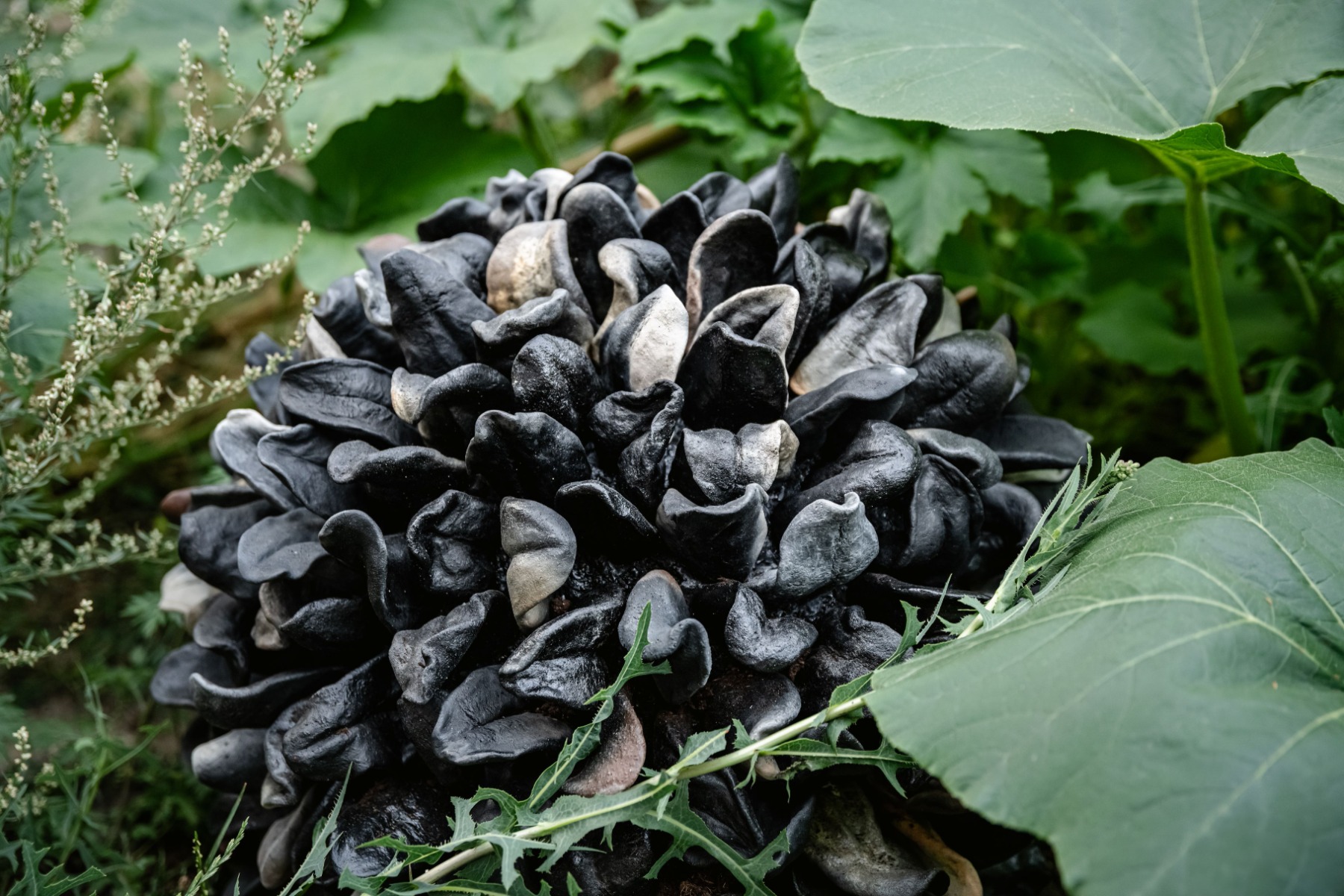
Lost for Words. Poland’s Contemporary Ceramics
Until 23 November
“Lost for Words” is a guest exhibition at the 5th Latvia Ceramics Biennale, showcasing Polish contemporary ceramics by artists from the Eugeniusz Geppert Academy of Art and Design’s Ceramic and Glass Department in Wroclaw. The title comes from the Polish expression “brak słów”, which stands for “speechless”, but can also be interpreted more literally as “struggling to find words”. This dual meaning reflects moments of powerlessness, when one’s arms drop in despair, as well as instances of awe that leave us breathless, when words fall short of expressing what we truly feel. In the face of such experiences, language often proves insufficient to convey the depth of emotion or understanding. When words fail, art becomes a powerful and universal form of expression, capable of communicating the intangible. Through images, forms, and symbols, art serves as a vessel of meaning, allowing viewers to engage in personal interpretation and experience emotional connection with what is seen.
LITHUANIA, Vilnius
Vilnius Gallery Weekend 2025
11–14 September
This year marks an important milestone – the 10th Vilnius Gallery Weekend (VGS). One of the most prominent contemporary art events in Lithuania, it annually brings together art institutions, independent galleries, artists, and audiences to meet, engage with, and experience the most relevant art practices – both inside exhibition halls and in unexpected public spaces around the city.
In 2025, VGS continues its tradition of entrusting the curated program to one of the city’s art spaces. This year, the program is shaped by (AV17) Gallery together with Karolina Tomkevičiūtė. The curated program “Liminality” invites audiences to step beyond conventional gallery spaces and discover contemporary sculpture and installation art in unexpected locations across Vilnius.
ArtVilnius’25
3 – 5 October
The 16th edition of the international contemporary art fair ArtVilnius’25 will take place from 3 October to 5 October at the Exhibition and Congress Centre Litexpo in Vilnius. ArtVilnius’25 will feature 81 contemporary art galleries and art institutions, showcasing more than 320 artists from 16 countries. Each year, the fair attracts 18,000–23,000 visitors of all ages.
ArtVilnius’25 will place special emphasis on art collecting in the Baltic States, and for the first time ever, will comprehensively present a curated range of private and institutional collections from the region. Focus on collecting will run throughout the ArtVilnius’25 programme (including Project Zone and the installations, sculptures and performances exhibition The Path), offering insight into the practices and narratives shaping collections across Lithuania, Latvia, and Estonia. The Focus Baltic programme curators: Maria Arusoo (Estonia), Inga Lāce (Latvia) and Sonata Baliuckaitė (Lithuania).
MO Museum
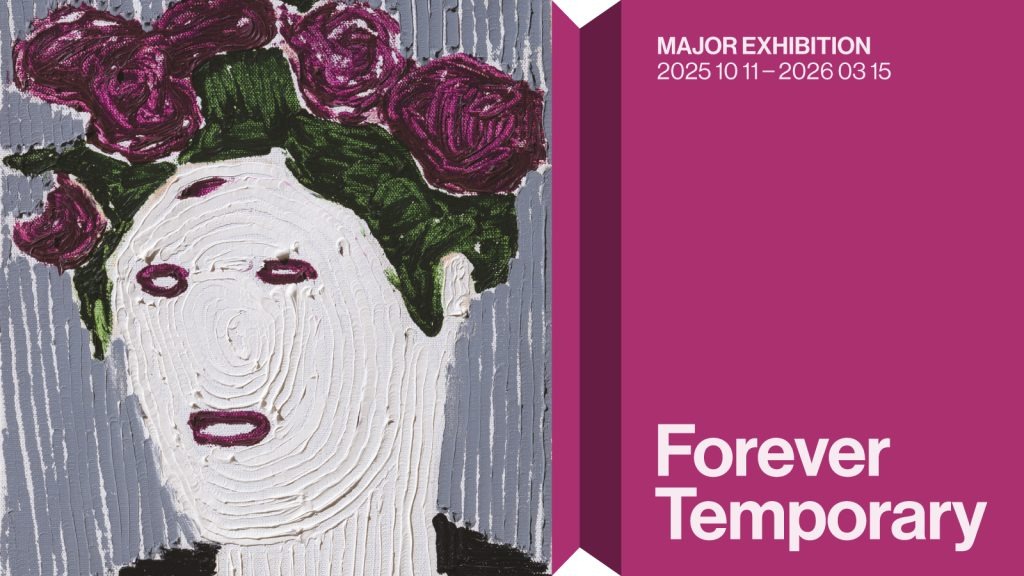
Forever Temporary
10 October – 15 March
The exhibition Forever Temporary is a dialogue between art history and the present, between then and now, between this and that. What does art history reveal about artworks and their viewers when we see it not merely as a succession of styles or eras, but as humanity’s ongoing effort to understand itself in the world? Each period brings its own context and visual language, yet all share a common thread: timeless existential questions around which creativity unfolds. Spanning from the late Middle Ages to contemporary art, the exhibition does not aim to trace the linear development of art history. Instead, it unfolds through thematic sections dedicated to questions that remain essential to human existence, all woven together by the theme of time.
Past, present, and future form the backbone of the exhibition, shaping a narrative about how we interpret our place and actions in the world. How do we define identity? How do we grapple with the inexplicable? How do we love, what do we fear, why do we work, and what do we hope for? Sometimes the answers are shaped by cultural experience – distinct in each era and not always immediately recognizable today. At other times, they are instinctive responses, universal across time.
The Radvila Palace Museum of Art
Julius and Tanya, 2024. Photo by Janina Sabaliauskaitė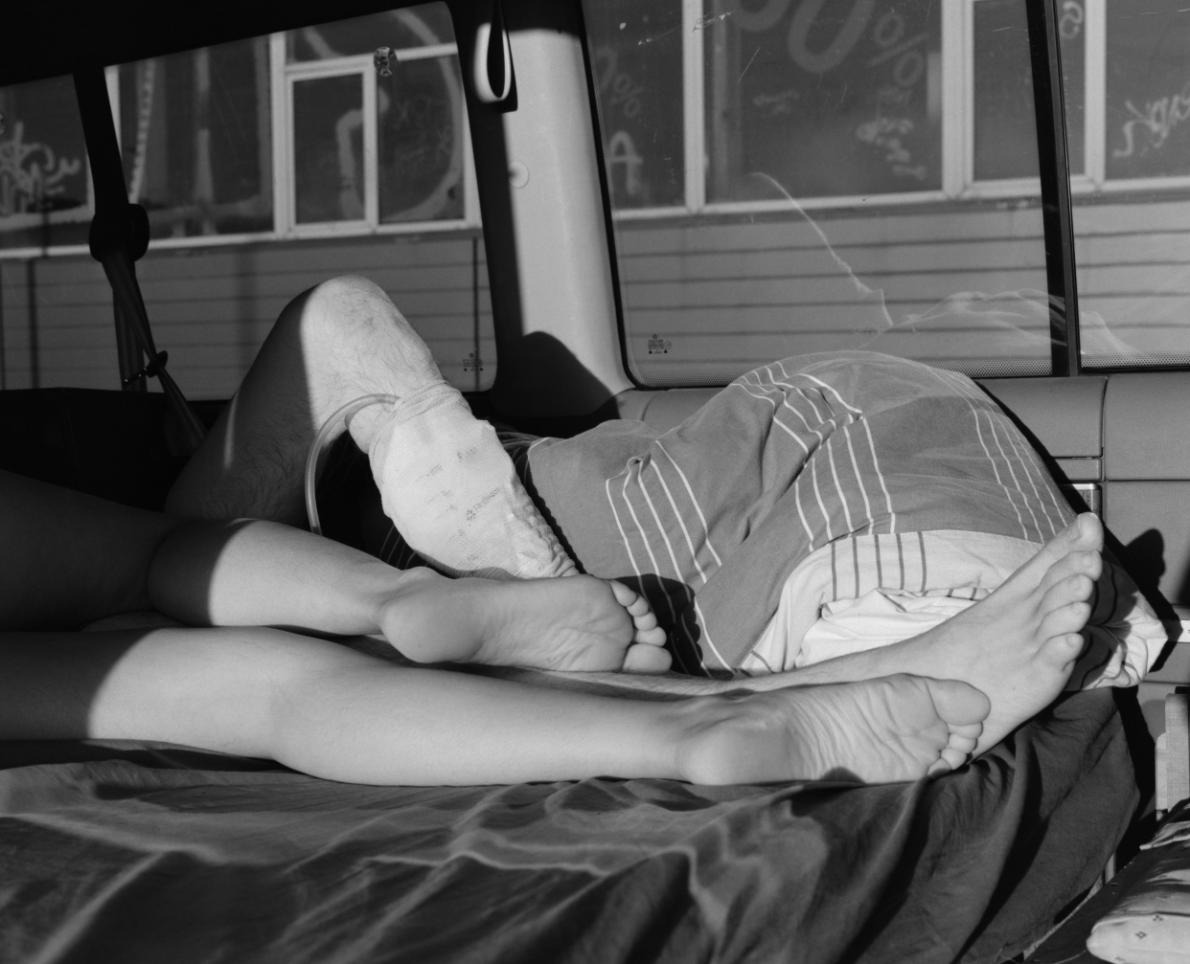
Janina Sabaliauskaitė. Pleasure
Until 28 September
Janina Sabaliauskaitė, working from Lithuania and Great Britain, subtly documents the life of LGBTQ+ community, the expression of their sexuality, joy and of communal spirit. To pursue issues of identity and gender, she dives into the themes of the erotic, of sexual education, and of disability. Her art is about intimacy and collaboration. The artist openly explores the relationships within the queer feminist society and the aesthetics of vitality.
The exhibition Pleasure, like other projects by the artist, started from conversations and attention to her models. The project records some of the most touching and powerful moments in the life of eleven participants, evocative of self-love, passion and eroticism, of attraction, potency, dreams, challenges and desires. All of these images are linked not only by the theme of sexuality. Disability – another phenomenon, often in the shadow of society life, also comes out in the prints. The exhibition underscores that life with disability, disfunction and individual needs is as diverse and unpredictable as any other, thus, in order to help these humans to live their life to the full, not depriving them of interaction, movement, sex, culture and entertainment, all these aspects of life have to be organized.
Sapieha Palace
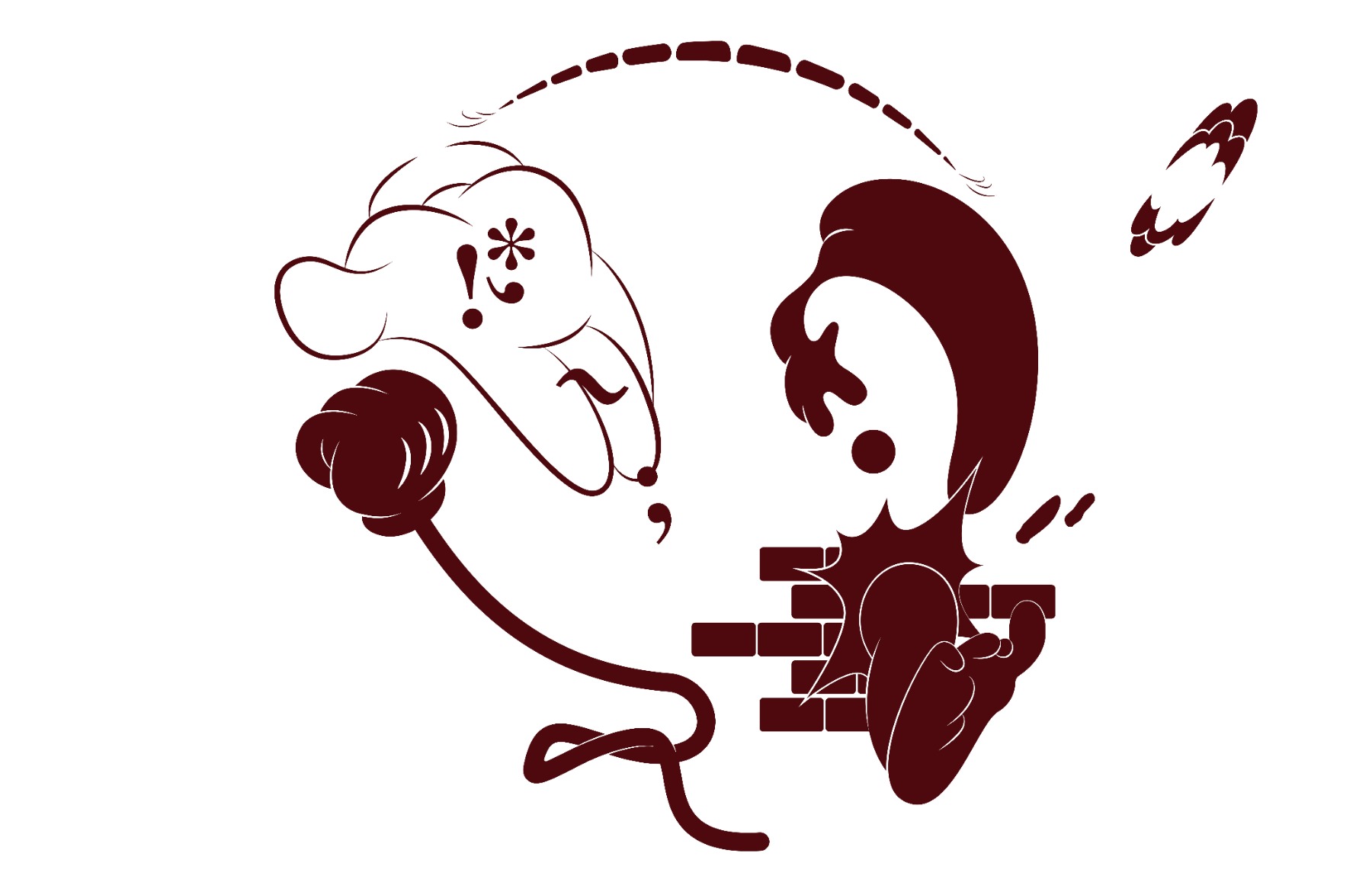
Breaking the Joints
Until 31 December
Breaking the Joints is a group exhibition and event programme that considers the status of the body within the history of animation, elaborating on the essential concepts of cartoons, while also examining what these modes of world-building can tell us about our world today. Once relegated to the periphery as a popular art form for children’s entertainment, animation has become integral in all media production, a code through which all images and constructions are composited. At the same time, scholars across and between disciplines are increasingly turning to animation to examine not only social and physical transmutations in our society and our media but also to reconsider material objects and relations through a renewed and speculative understanding of animist, agential, and vitalist principles. As such, animation is not simply a specific historically-bound practice of techniques and conventions for moving images but can be regarded as an epistemology, a way of understanding and relating, that offers new possibilities for socio-political, cultural, and ecological critique and embodied transformation.
With a nod to the Sapieha Palace’s former use as a military hospital and ophthalmology clinic, Breaking the Joints explores animation’s fusion of optics and anatomy, and considers legacies of bodily disfigurement and manipulation. In their works, the exhibited artists draw from and critically deploy animated tropes and techniques to address bodily anxieties and material relationships, media and trauma.
The National Gallery of Art
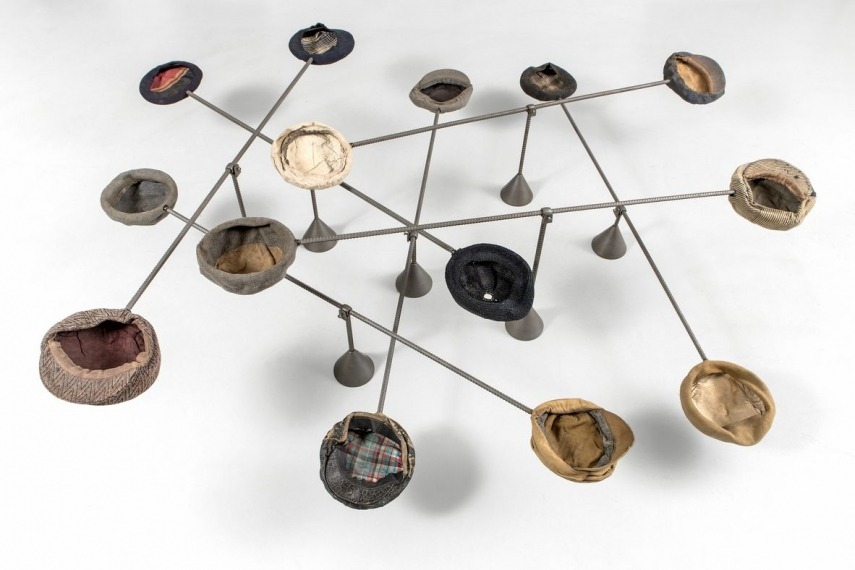
Between Dawns. Acquisitions of the Lithuanian National Museum of Art. 2015-2025
Until 21 September
The past decade has been shaped by evolving cultural policies, shifting economic conditions, as well as revised collection‐building strategies, and turnover in Museum’s leadership. While acquisitions remain rooted in national value, there is an equally strong focus on the present moment: historical canons are reconsidered in light of today’s political and socio-cultural contexts. Most newly acquired works don’t appear in exhibitions right away – their true significance often reveals itself over time, the impact of which cannot be assessed in advance.
The exhibition has been arranged as a panoramic, schematic survey of the LNMA’s collections of visual art. Its stark medium-based divisions – painting, graphic arts, sculpture, and photography (including video) – point to just a sliver of the ‘Grand Archive’. The title evokes momentary states in which echoes of the past merge with forecasts of the future. Between Dawns speaks not only to the interval between two dates, but also to a hopeful uncertainty that has guided the collection over the last decade. After all, no collection is ever truly complete.
The National Museum of Lithuania
Photo: Silvestras Samsonas, National Museum of Lithuania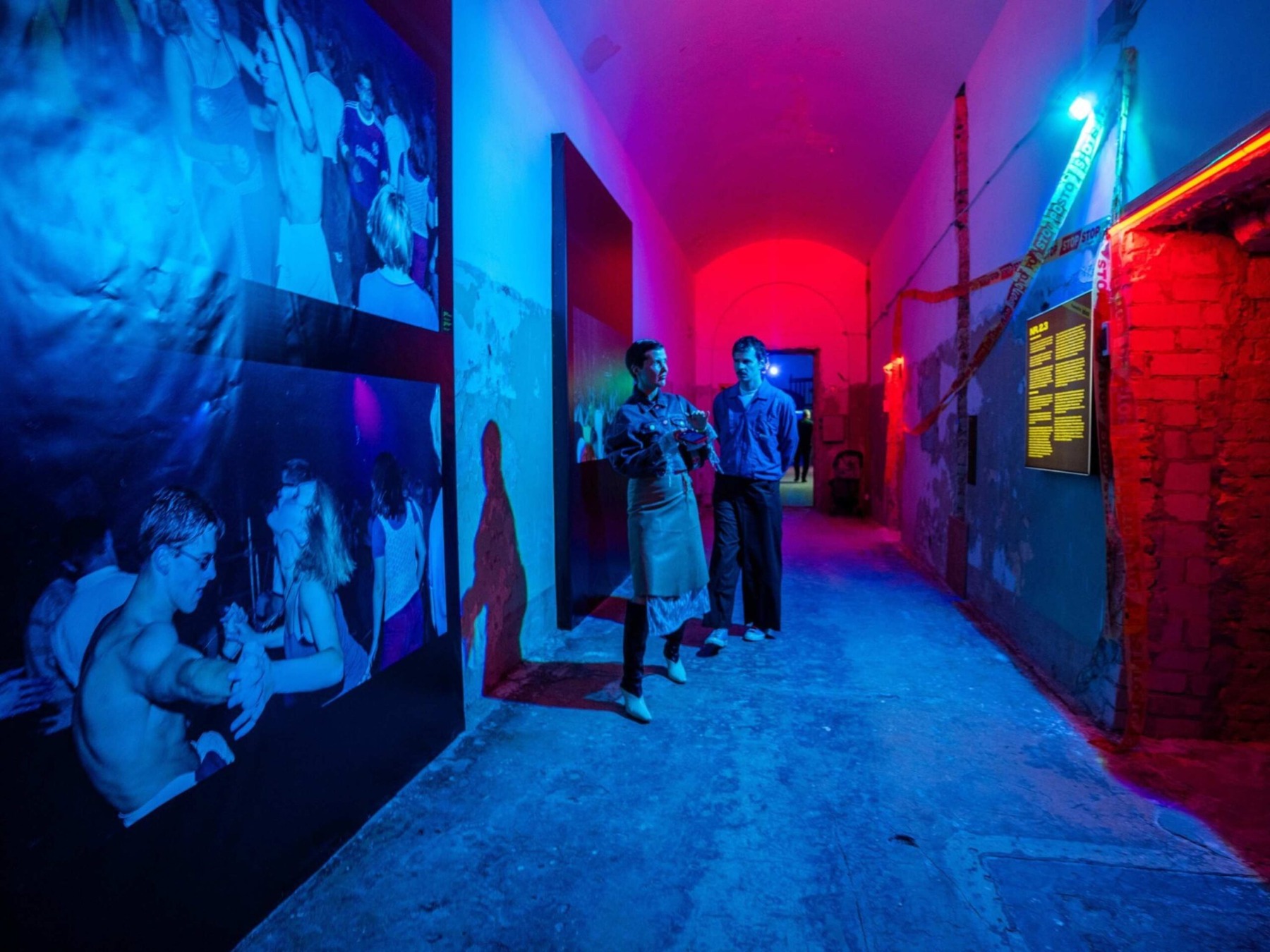
Rave Nation. Dancing to the Sounds of Freedom. 1992–2004
Until 31 October
Rave Nation is not exactly an exhibition about parties. Or rather, not merely about parties.It is, in fact, an archive and a cartography of the turning point at which rave emerged as a form of culture, a machine of resistance, escape and (trans)formation. This machine is presented in the exhibition solely through the small fragments – flyers, photographs and archival video snippets – left behind in the wake of an intense ‘battle’ on the dance floor.
This exhibition brings together, for the first time, the various factions, or tribes, of the ‘rave nation’: from happy hardcore to house, from Vilnius to Marijampolė, from more pop-orientated discos to parties in bomb shelters. Rave Nation unfolds in layers. At its core lies the history of Lithuanian rave from 1992 to 2004, tracing its evolution from a post-Soviet phenomenon into a Western model. Artefacts displayed in the exhibition’s galleries – flyers, photographs and other documents – chart the rise of the DJ movement, the emergence of club culture, the intersections of dance and psychoactive substances, and journeys made across cities: Klaipėda, Kaunas, Vilnius, Marijampolė, Panevėžys, and Šiauliai. The historical material is complemented by contemporary artworks, some created specially for this exhibition, others revealing rave as a field for exploring imagination, body, sound and community.
Pamėnkalnio Gallery
Julija Goyd & Ivona Tau. Dear Eliza
Until 4 October
Created in 1966, ELIZA was the first program in human history to simulate a psychotherapeutic conversation. Much like today’s chatbots, it engaged in dialogue with people, seemingly helping them work through psychological concerns. In reality, ELIZA only pretended to understand or to learn from its interlocutors – just as Eliza, the heroine of Bernard Shaw’s Pygmalion, perfected the imitation of upper-class speech. Both Elizas – the computer program and the stage character – maneuvered within patriarchal structures by means of mimicry and emotional labor, creating an impression of social “flexibility.” The name ELIZA reminds us that imitation, servitude, and endless compliance have been inscribed into the history of technology from the very beginning, framed within the logic of inexhaustible, tireless care and creativity.
In the works of Lithuanian artists Julija Goyd and Ivona Tau, based in Berlin and Warsaw respectively, artificial intelligence also imitates – yet here it openly acts as a co-author, imitating itself. In their separate and joint artistic experiments, the same visual resources intersect but diverge in different directions.
More info >>
Editorial
The Gearwheel, Hardworking Hands, and the Tired Exhibition Visitor
11 September – 31 October
The exhibition ‘The Gearwheel, Hardworking Hands, and the Tired Exhibition Visitor’ is about how the history of art and labour is written. It is about what peeks anxiously through surfaces that are worn out or overpolished by the passing of time. It is also about the body at work, itching in its uncomfortable office chair, following the blinking cursor of the laptop with dry eyes. The body sore from the loom, hammering a wedge and a nail, languishing in an unheated studio in a now-defunct Soviet factory. Finally, the exhibition is about workers: the archivists, the readers and writers of letters, the budget calculators, the artists, their childminders and family members, the visitors who drop in on the exhibition after a long day at work, looking for a place to sit, and the exhibition attendants who are quietly observing them.
The exhibition features the artists Agnė Bagdžiūnaitė and Petras Kalpokas, Irena Haiduk, Morta Jonynaitė, Tomasz Kobialka, Ieva Rižė, and Șerban Savu. It is curated by Vaida Stepanovaitė. The fresco Labour by Petras Kalpokas was researched by Agnė Bagdžiūnaitė. The exhibition architecture was designed by Gabrielė Černiavskaja, with technical implementation by Matas Šatūnas. Communication design was by Nerijus Rimkus. The texts were translated and edited by Rosana Lukauskaitė and Joseph Everatt. The exhibition is overseen and visitors welcomed by Anna Chostegian.
Medūza
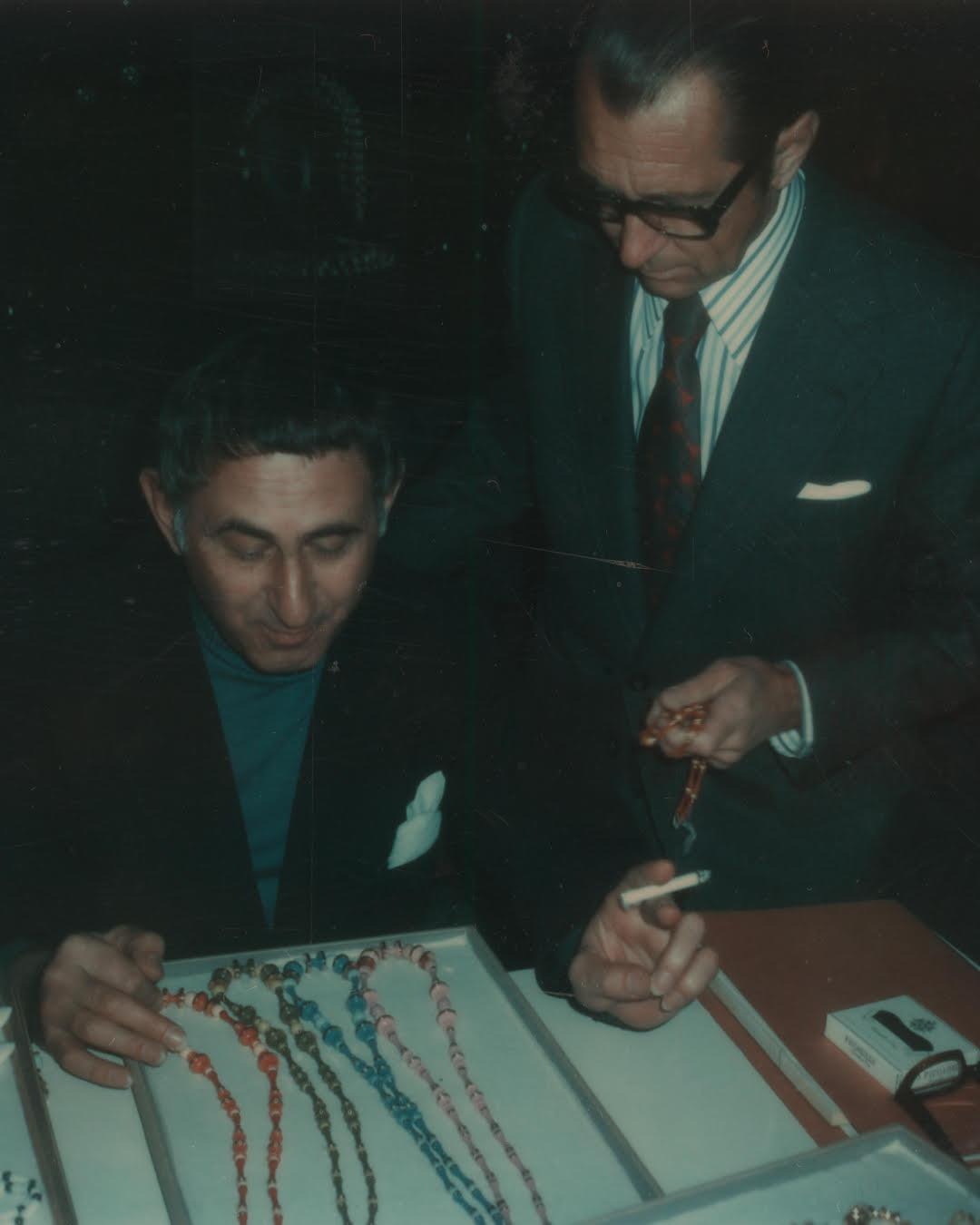
Anna-Sophie Berger. The 60s
Until 29 November
The 60s is Anna-Sophie Berger’s first solo exhibition in Lithuania and the Baltics, featuring a newly commissioned body of work. The show builds on Berger’s recent investigations into the conceptual, social, and aesthetic dimensions of fashion design, and how the contradictions inherent therein shape contemporary perception. This line of inquiry has become a recurring and widely recognized motif in her artistic practice, articulated in exhibitions such as Something for Everyone, Everything for No One in collaboration with Teak Ramos (International Library of Fashion Research, Oslo, 2025), The Years (MAK Geymüllerschlössel, 2023), Mode und Tod (Galerie Emanuel Layr, 2023), and Wealth and Propriety (Lodos Gallery, Mexico City, 2022).
On this occasion, The 60s is framed by two apparently distinct sets of archival images. The first comprises functional, decidedly non-fashion-oriented designs in drawings, sketches, and textile patterns by members of the Artists’ Association’s Soviet-era textile section, spanning the late 1960s to the late 1980s. The second consists of photographs scanned from a polaroid album assembled by the artist’s grandmother as a gift to her father. Taken in the 1960s, they depict clients of the family’s jewelry factory in Austria, seated in the showroom while selecting seasonal styles and placing orders. The apparent distance between these two sets of images is contradicted by an implied narrative of shifting aesthetic codes, shaped by large-scale geopolitical transformations and their effects on lived material conditions. The closure of the “Berla” factory in 2005, prompted in part by the EU’s expansion and the influx of cheaper labor from the member states, parallels how the standardized, uniform codes rehearsed by mid-century designers in Lithuania gradually gave way to Western trends.
LITHUANIA, Klaipeda
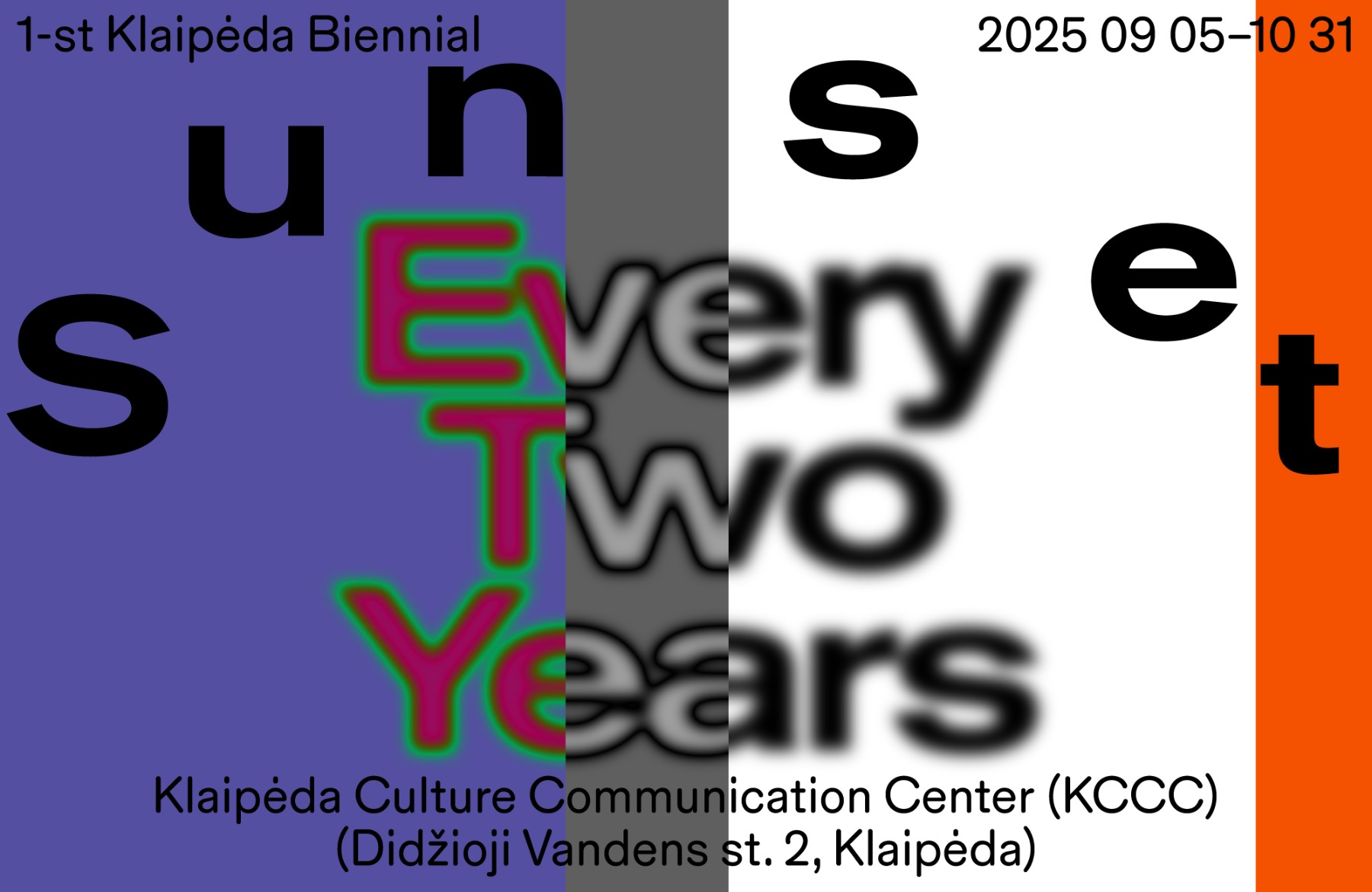
1st Klaipėda Biennial: Sunset Every Two Years
Until 31 October
This autumn, the Klaipėda Culture Communication Centre (KKKC) presents its inaugural biennial, ‘Sunset Every Two Years’, taking place at KKKC and across various public spaces in Klaipėda. Organised in partnership with the Contemporary Art Centre, the biennial is curated by CAC director, Valentinas Klimašauskas.
‘Transit’ (from the Latin transitus – meaning passage or change) serves as the keyword of the upcoming Biennial, referring to an intermediate state of transition and transformation. The 1st Klaipėda Biennial (KB1) emerges in response to a lack of large-scale, recurrent, discursive contemporary art events in Western Lithuania. The international KB1 will take place across the premises of the Klaipėda Cultural Communication Centre (KCCC) and the city’s public spaces, with a special focus on the maritime region of Klaipėda, its history, and the countries along the shores of the Baltic Sea. The long-term aim of the project is to establish a sustainable, large-scale international contemporary art event in Western Lithuania, fostering collaboration among artists and partner institutions from Northern Europe, the Baltic States, and beyond.
More info >>

15th Kaunas Biennial, Life After Life
Until 23 November
Curator of the 15th Kaunas Biennial, Adomas Narkevičius: “With the 15th Kaunas Biennial, Life After Life, I sought to bring together artists, artistic practices and a curatorial approach that either reflect or work through the conditions and moods of transition and uncertainty, in ways that remain unresolved or unstable themselves. This edition centres on temporal and emotional states that recur, stall or resist closure: a moment that feels like an endless present looping back on itself, or an after end-of-history interlude. What, if anything, is shifting remains arguably unclear.
In Life After Life, I think of biennial-making as an adaptable form, at times strained, overwhelmed or out of step. I wanted to provide audiences with an exhibition that shifts in scale, tempo and tone, treating tensions and dissonances as method. The exhibition unfolds against a backdrop of algorithmic decision-making, fractured trust and attention, faltering “rules-based order” and contemporary art’s increasingly antiquated role as a democratising product. I hope Life After Life moves between the structural and affective registers, tracing how conditions like anticipation, control, shame and inertia take on aesthetic form”.
More info >>
Title image: Survival Kit 16: House of See-More. Installation view. Works of Edith Karlson and Oksana Shachko. Photo: Kaspars Teilāns
